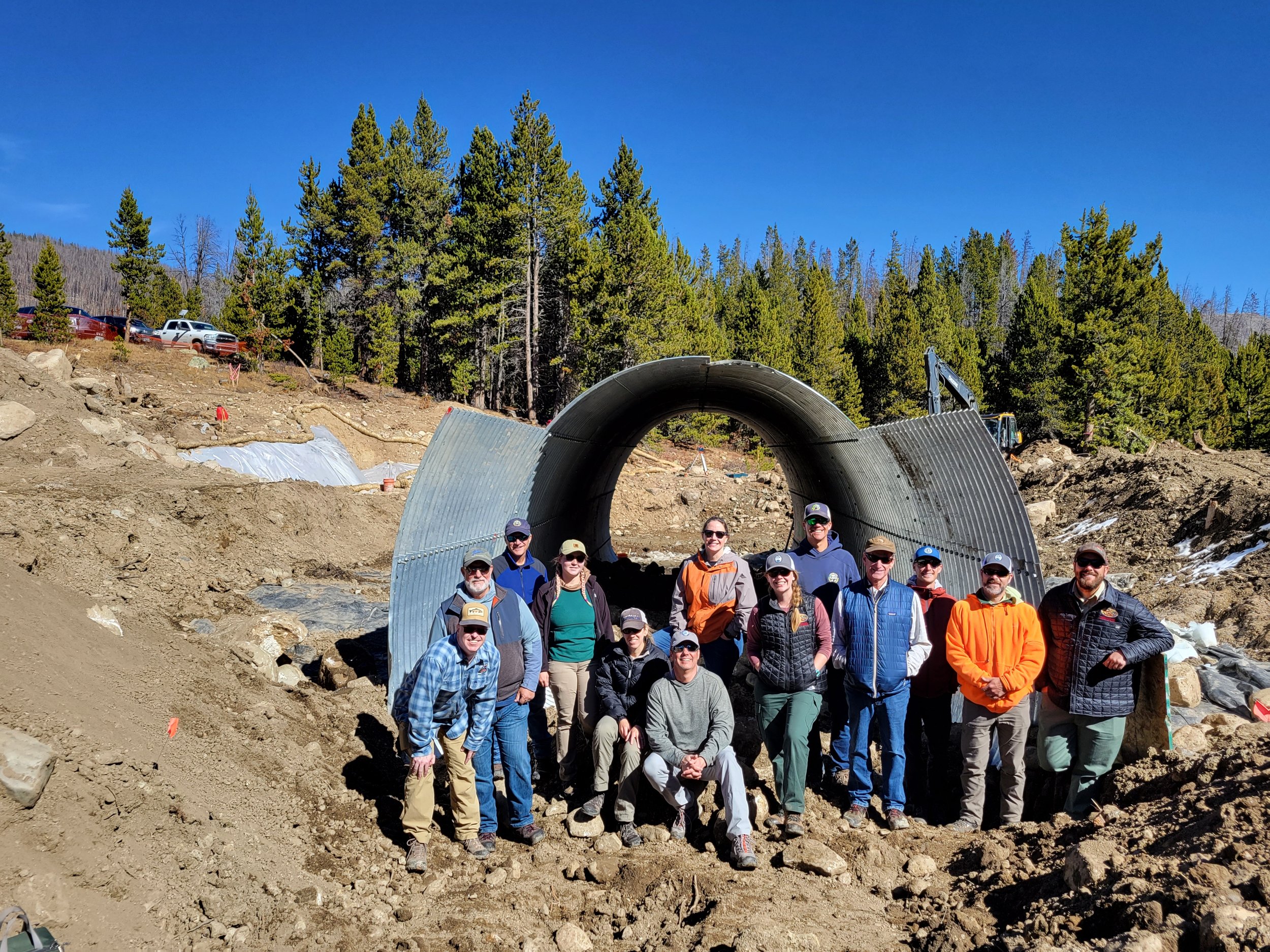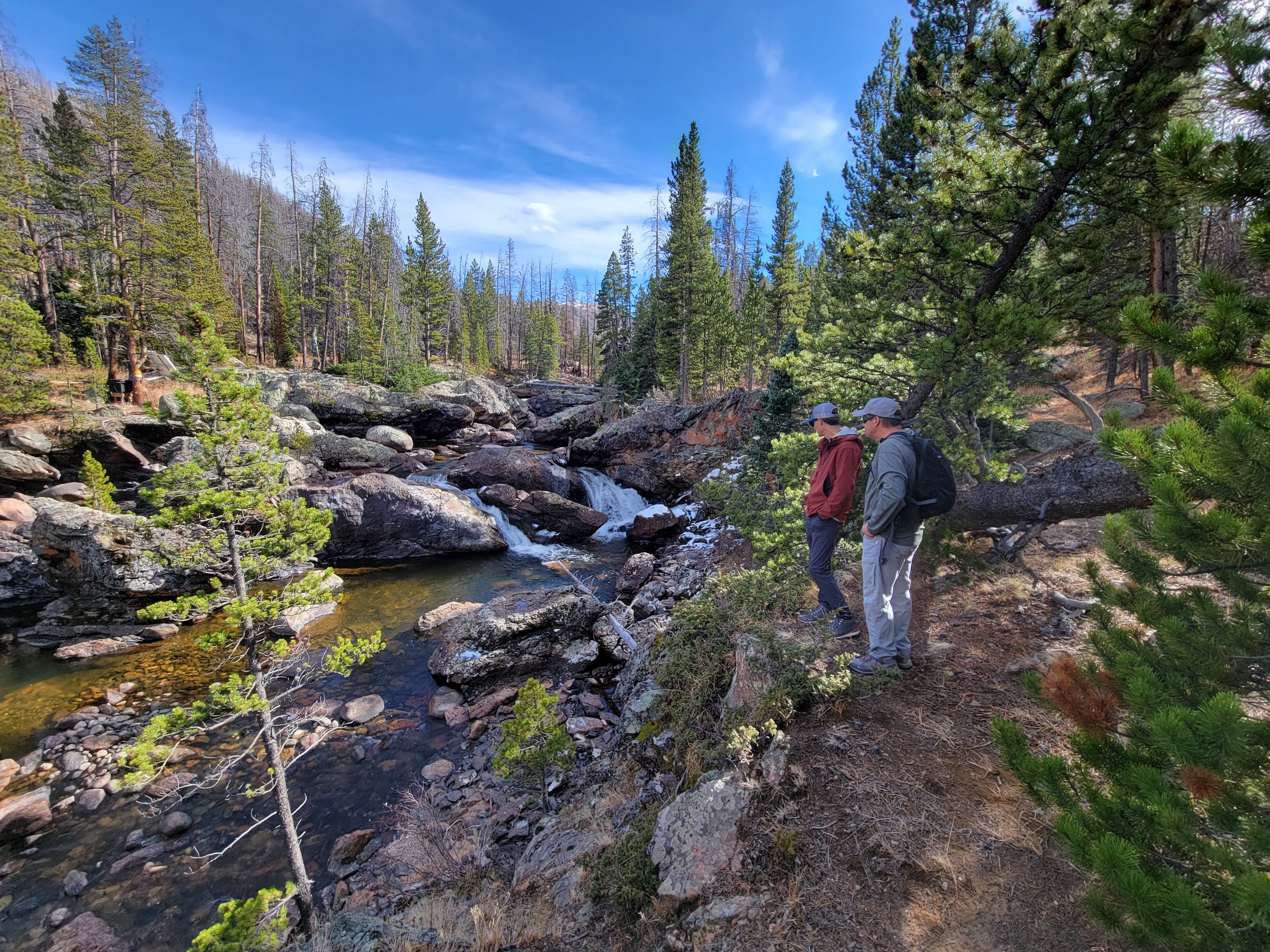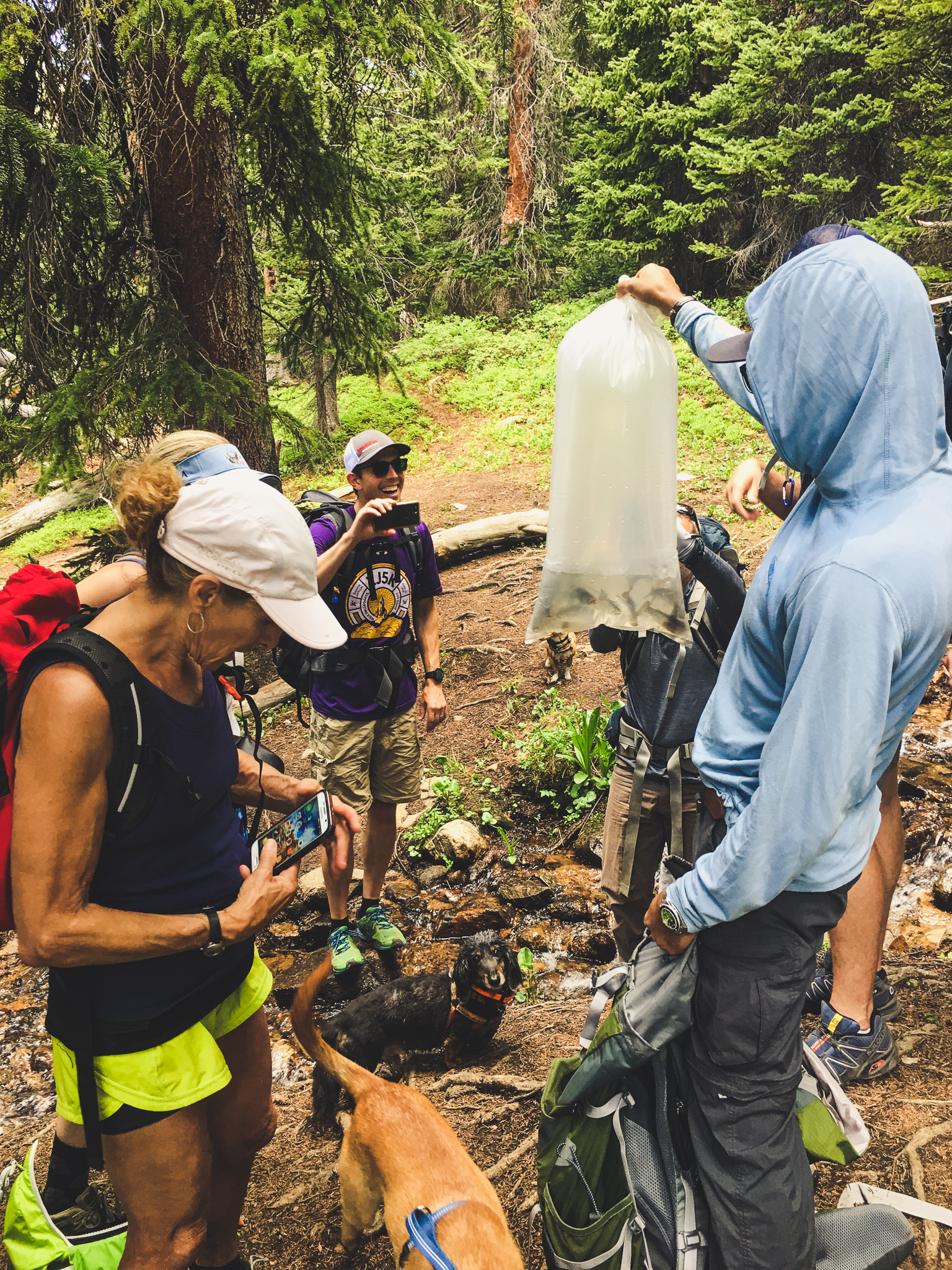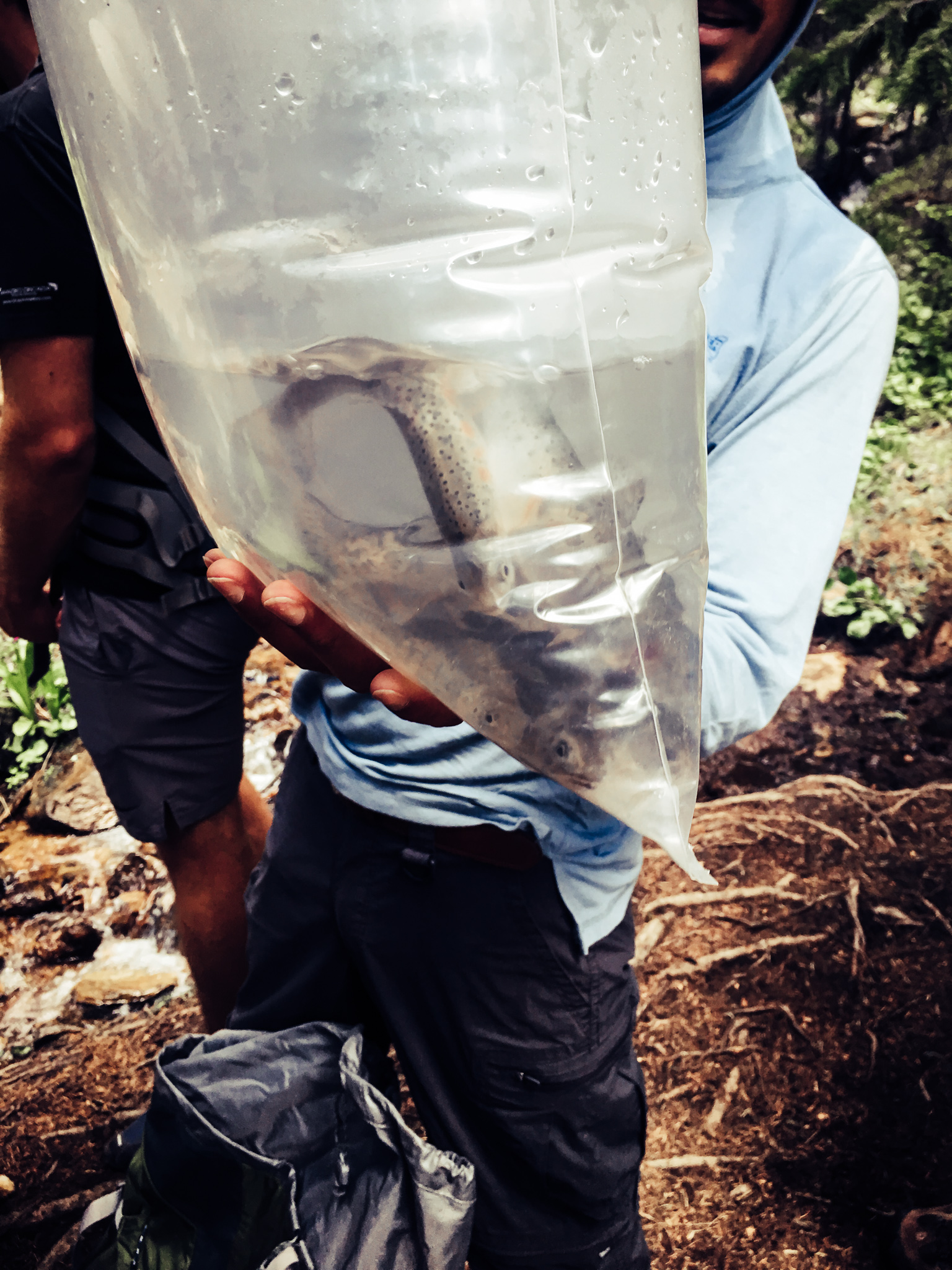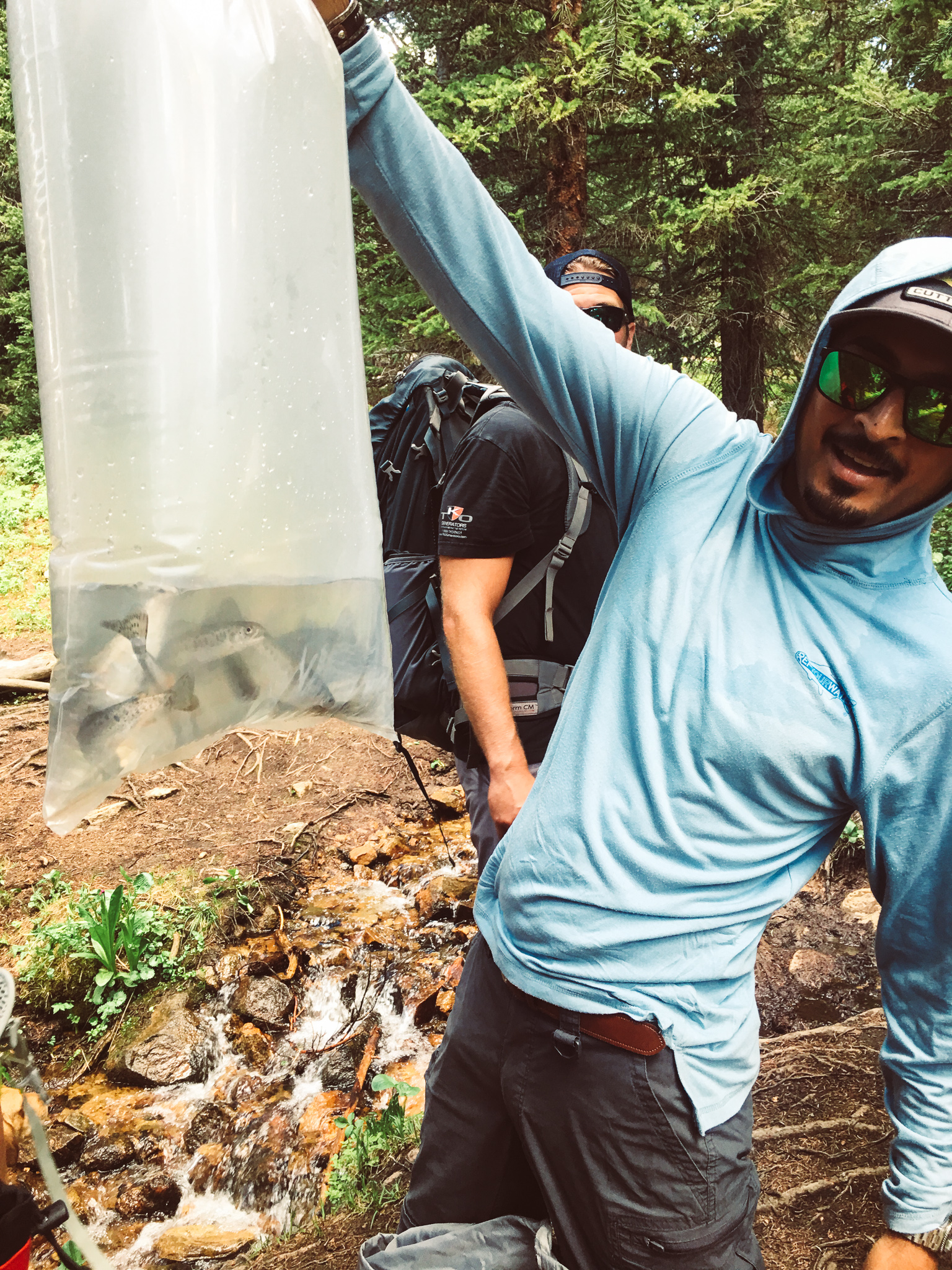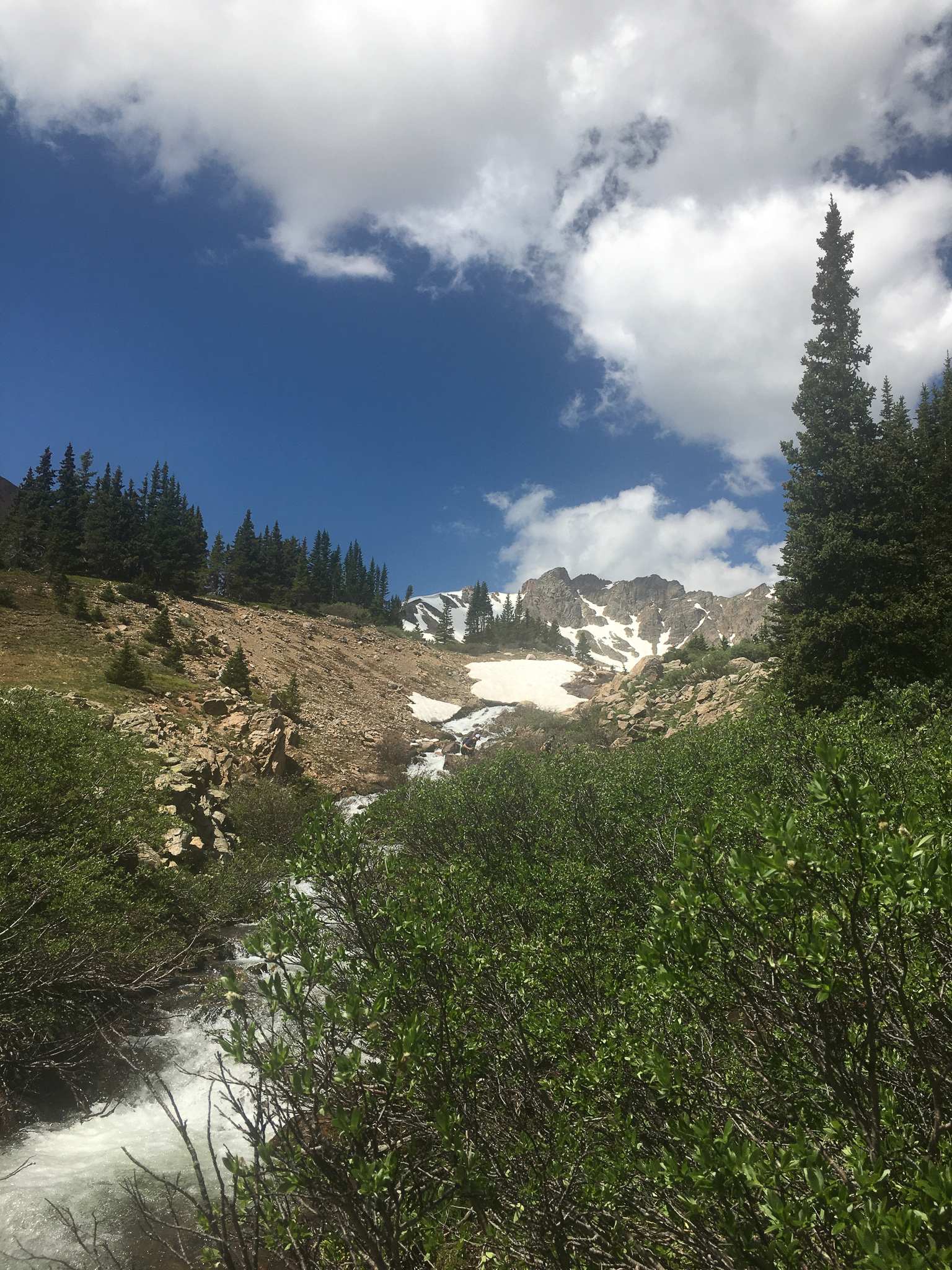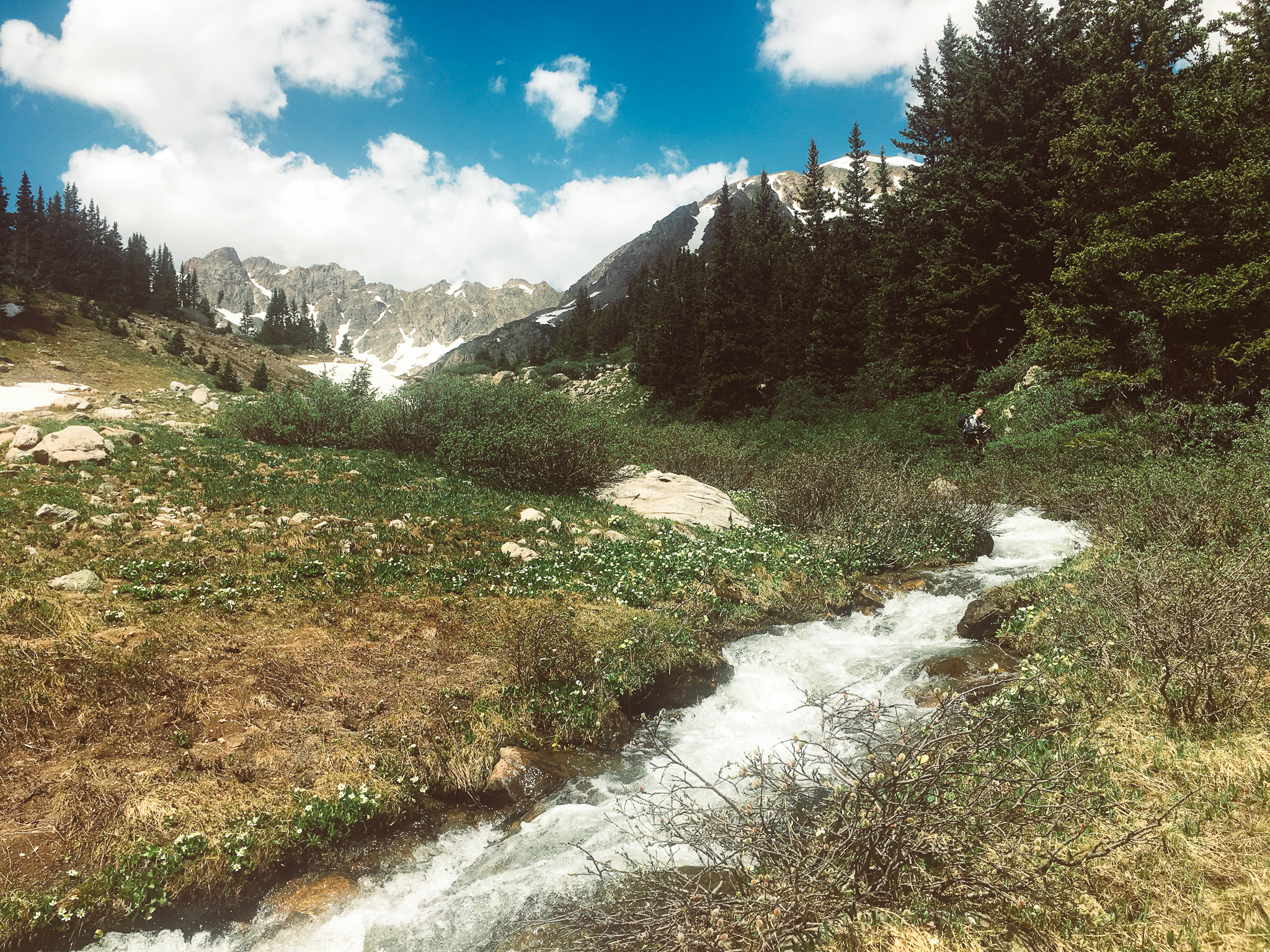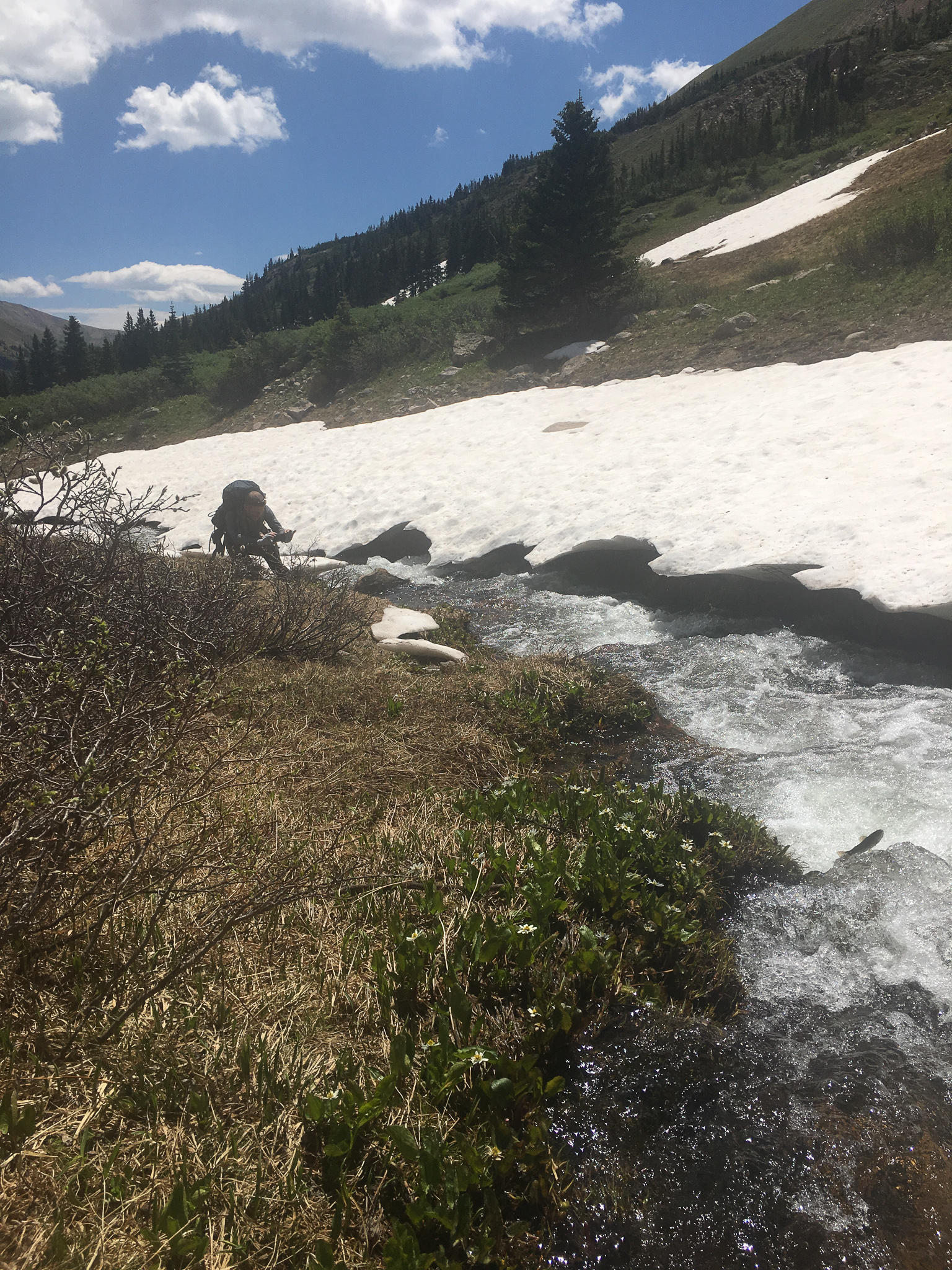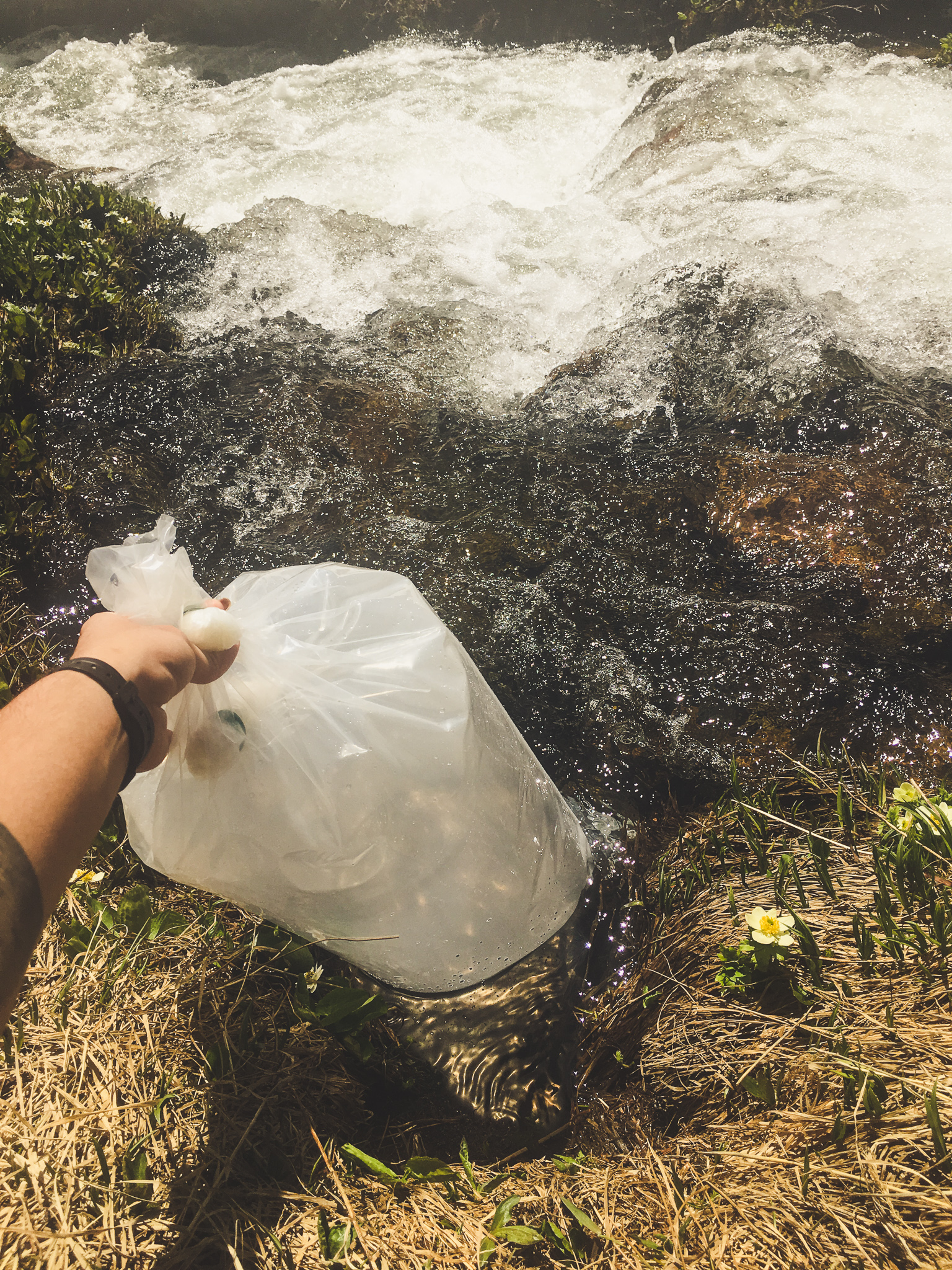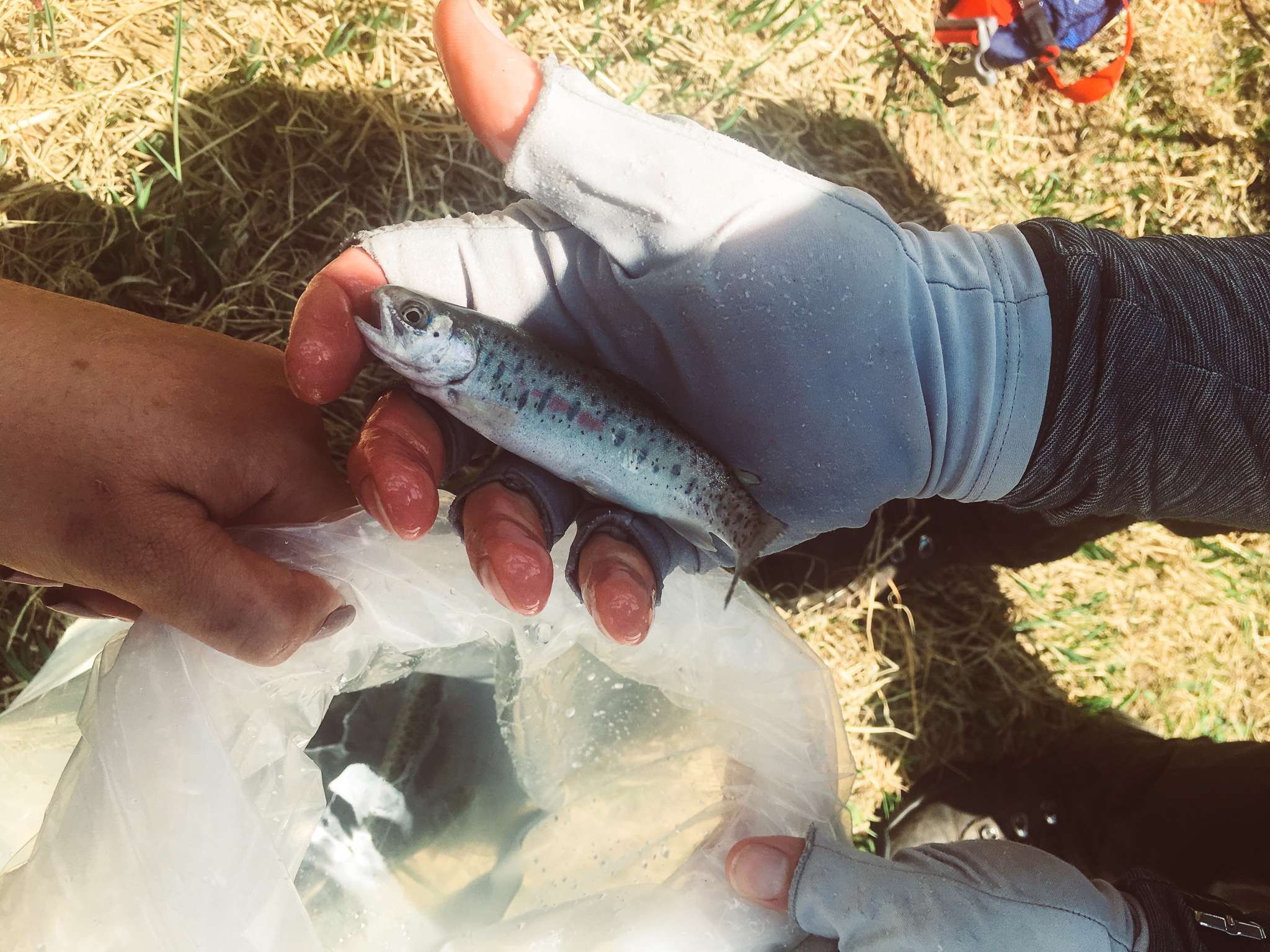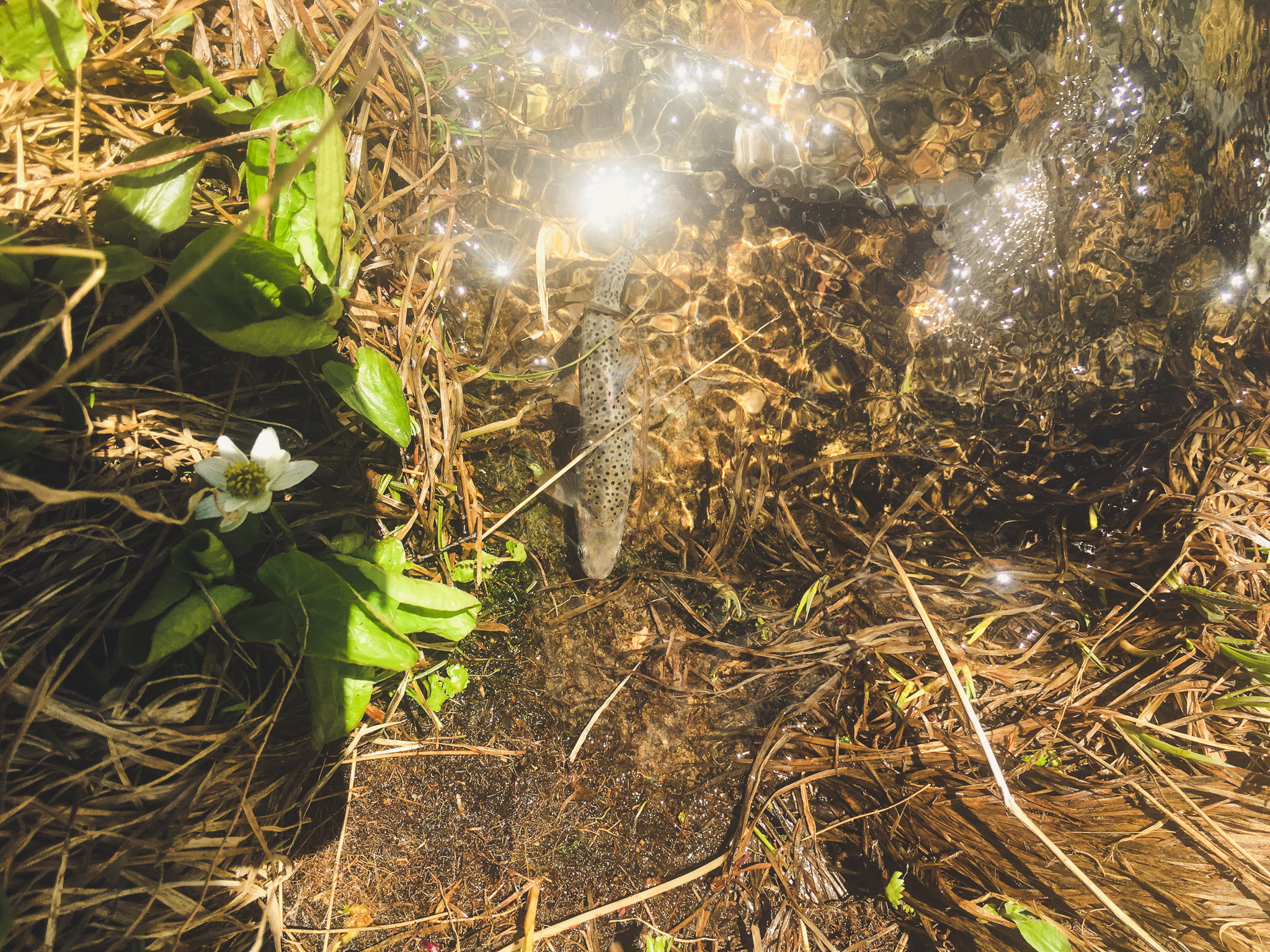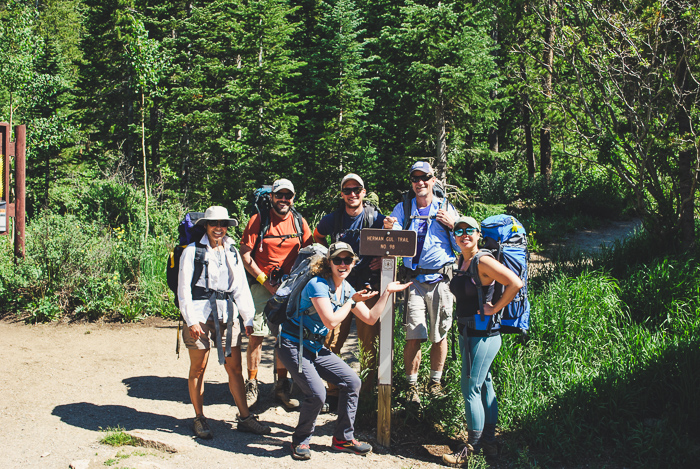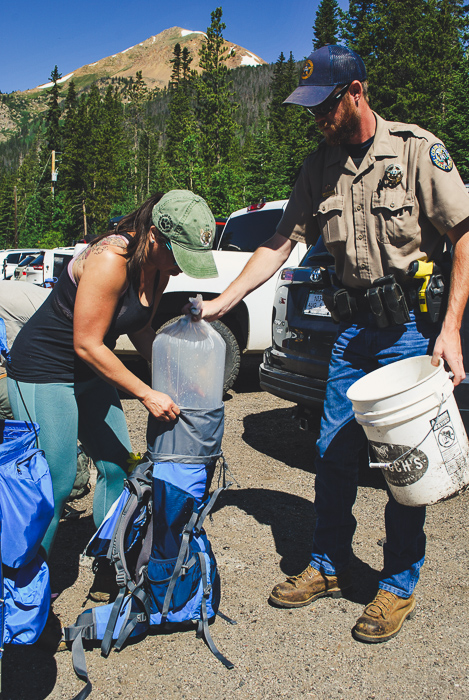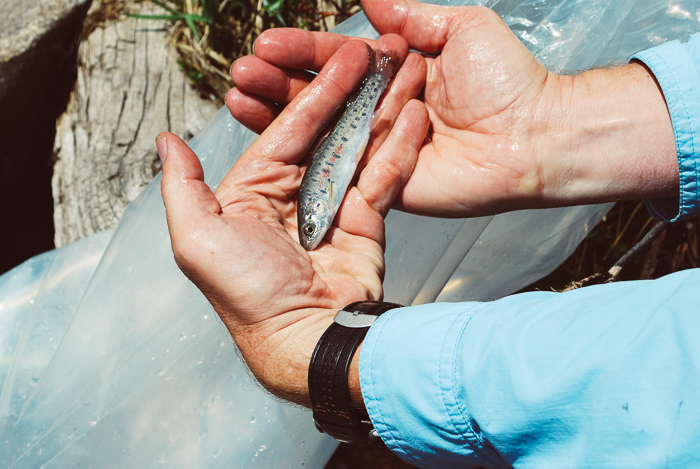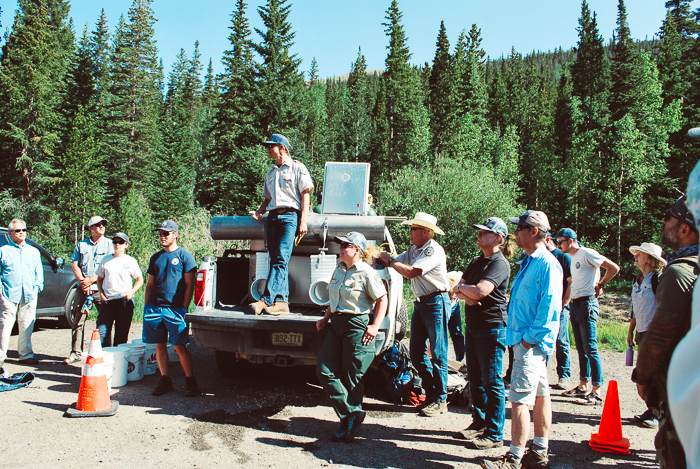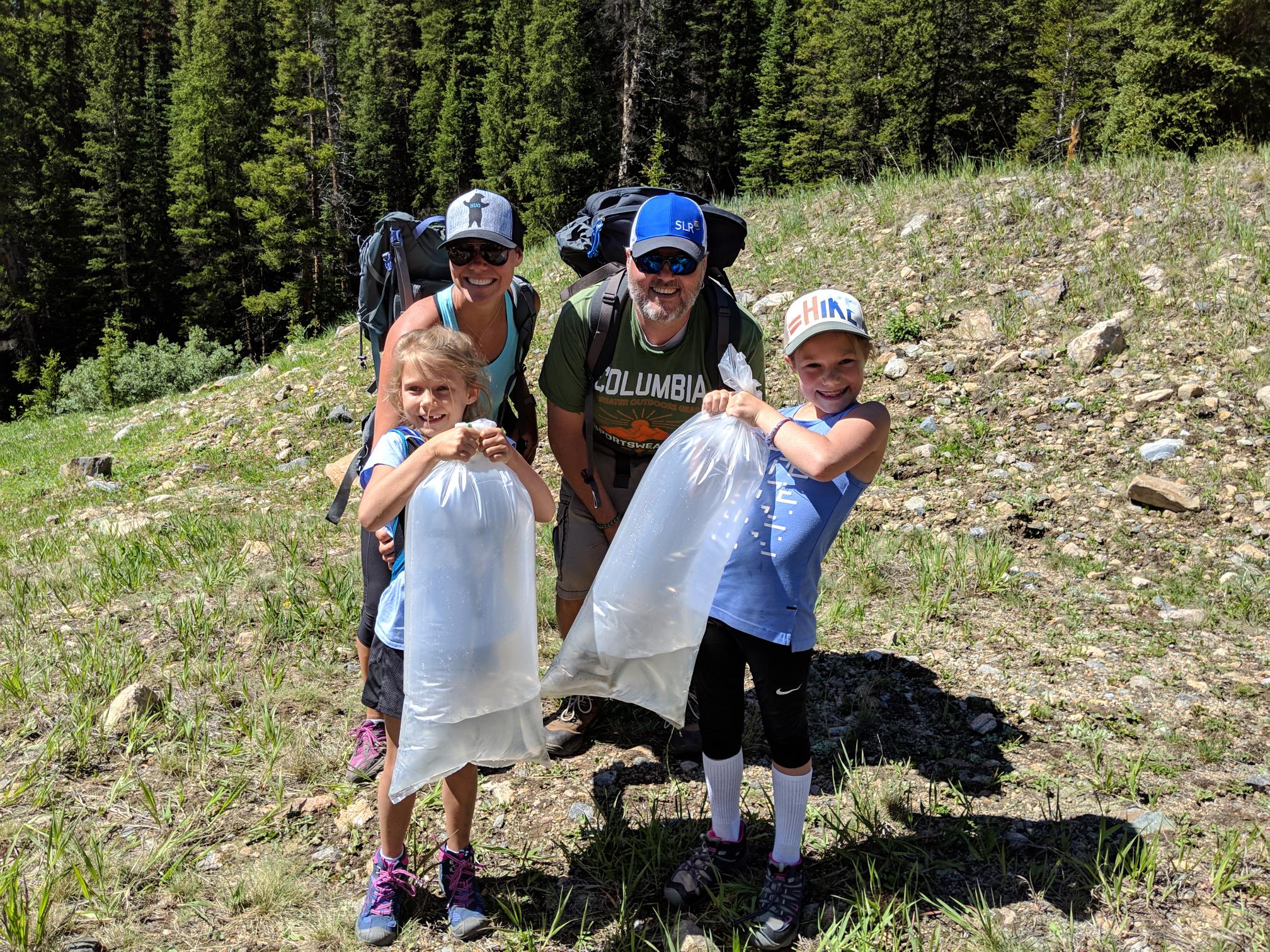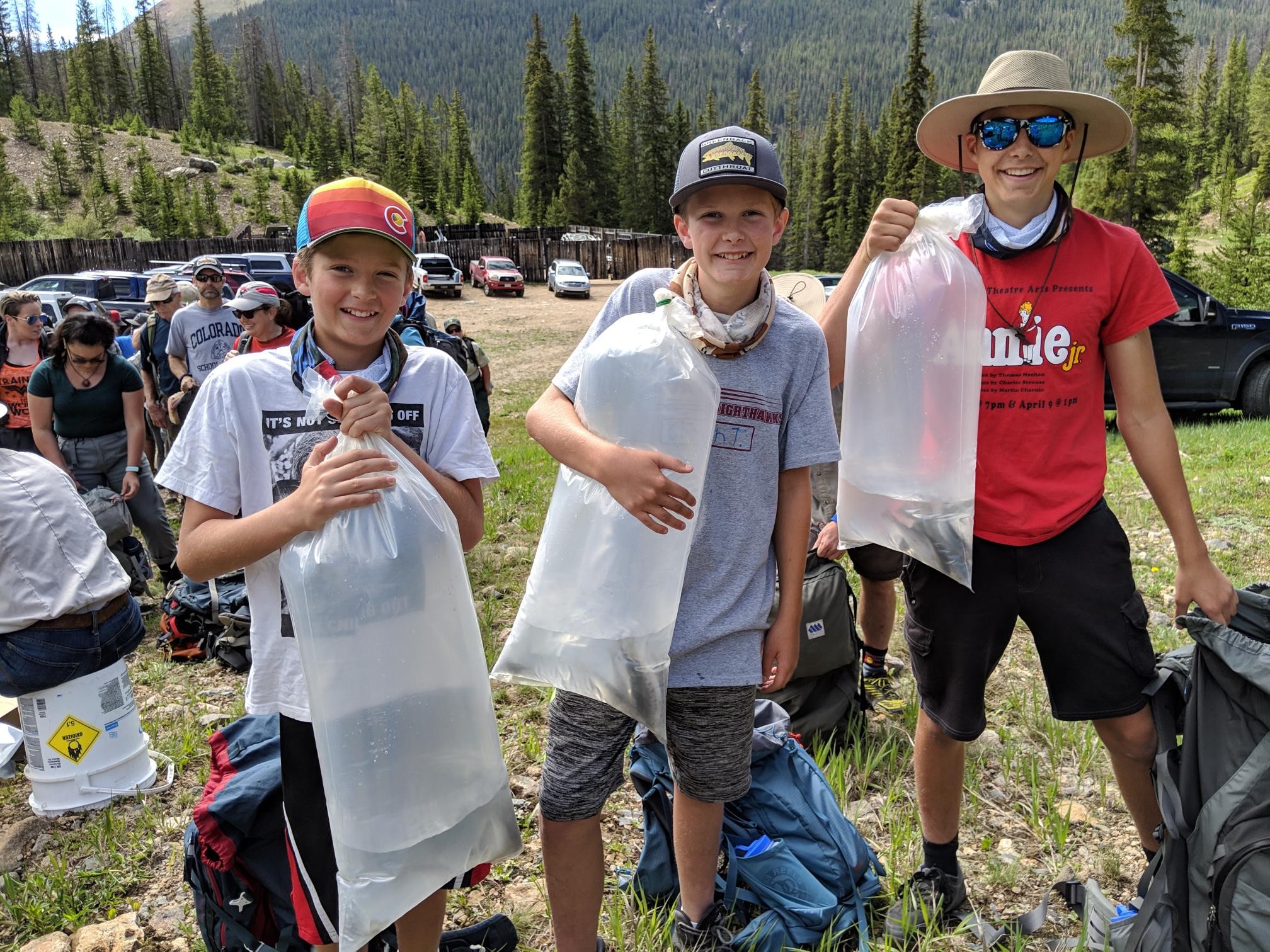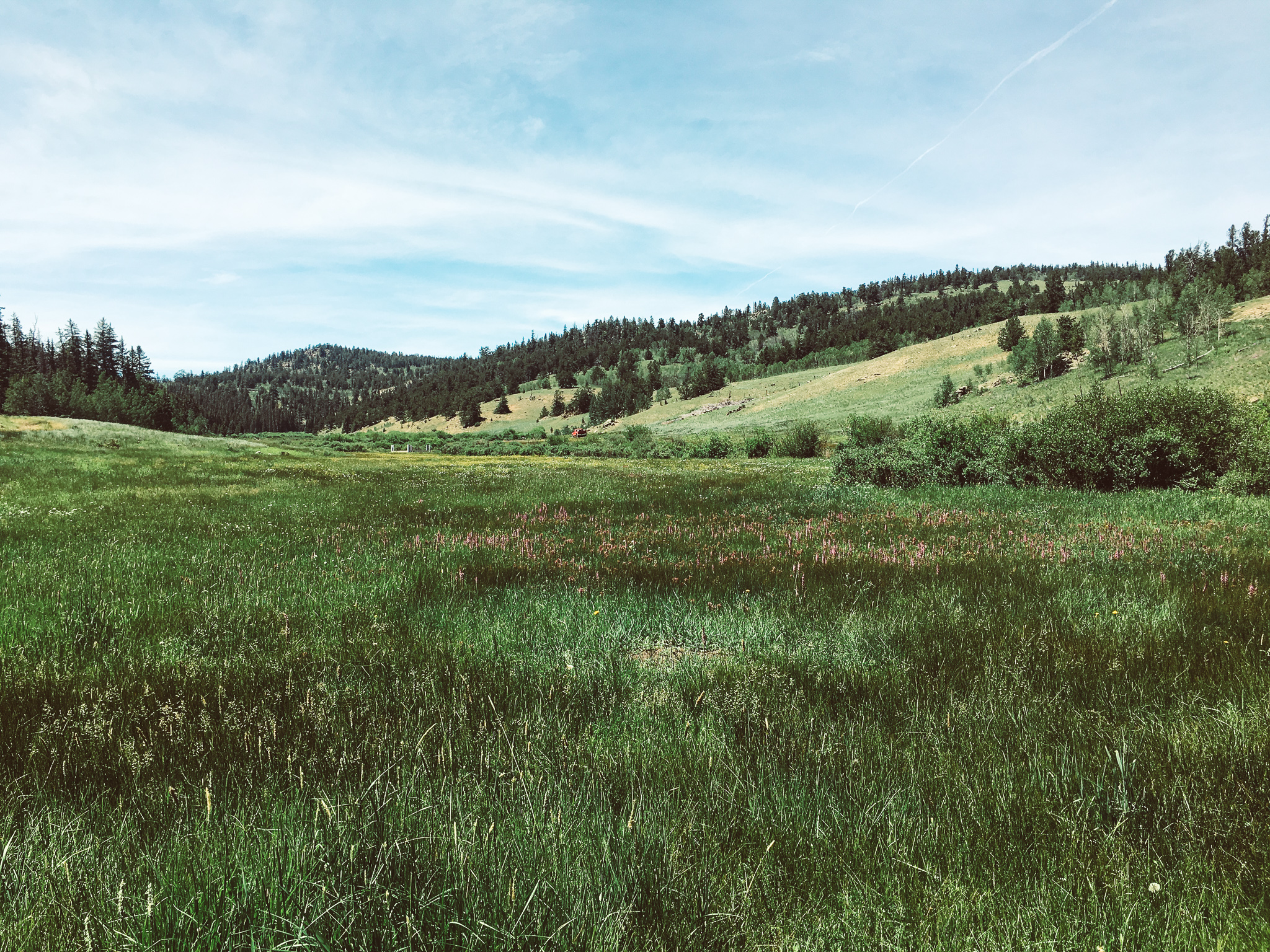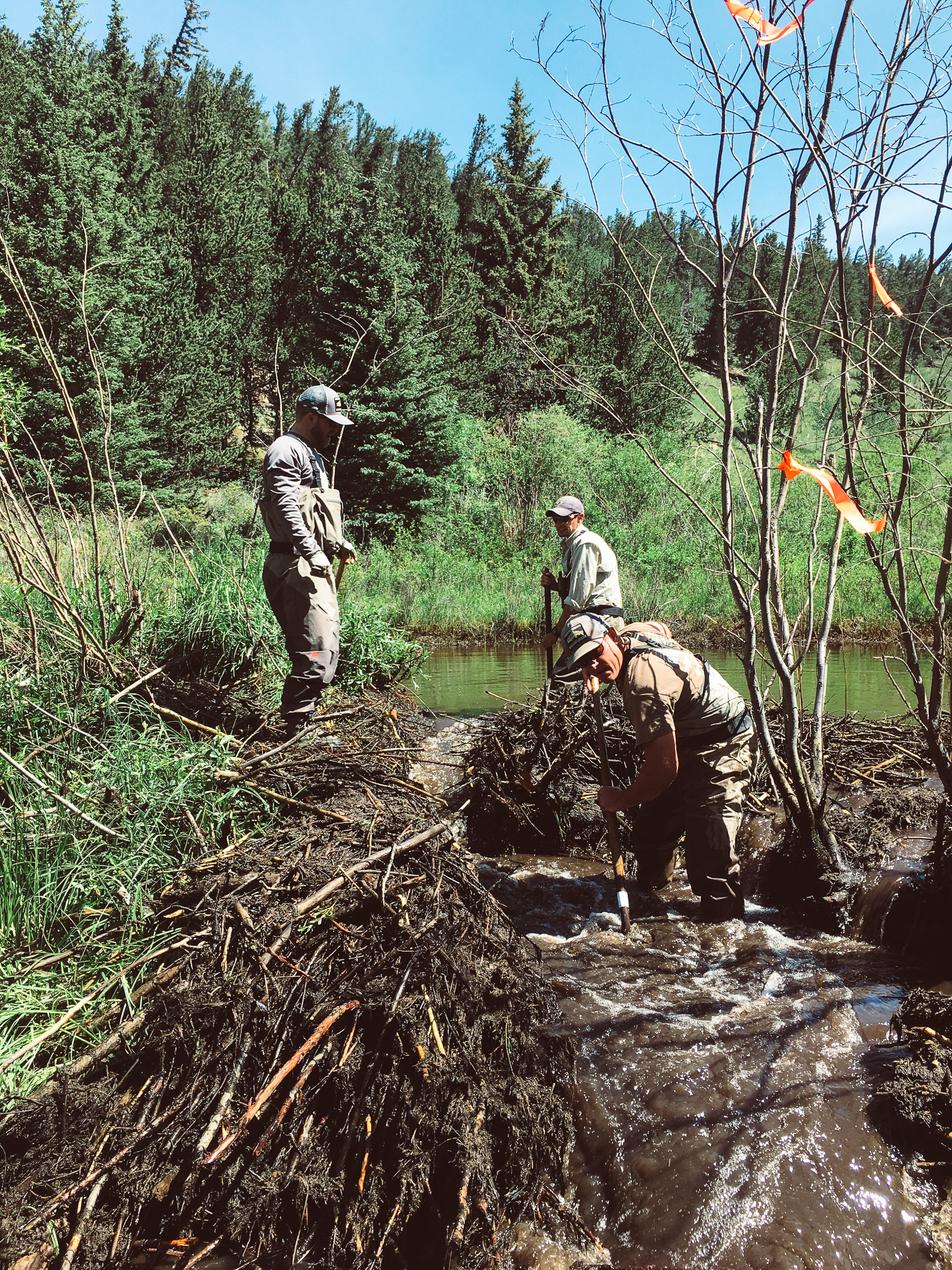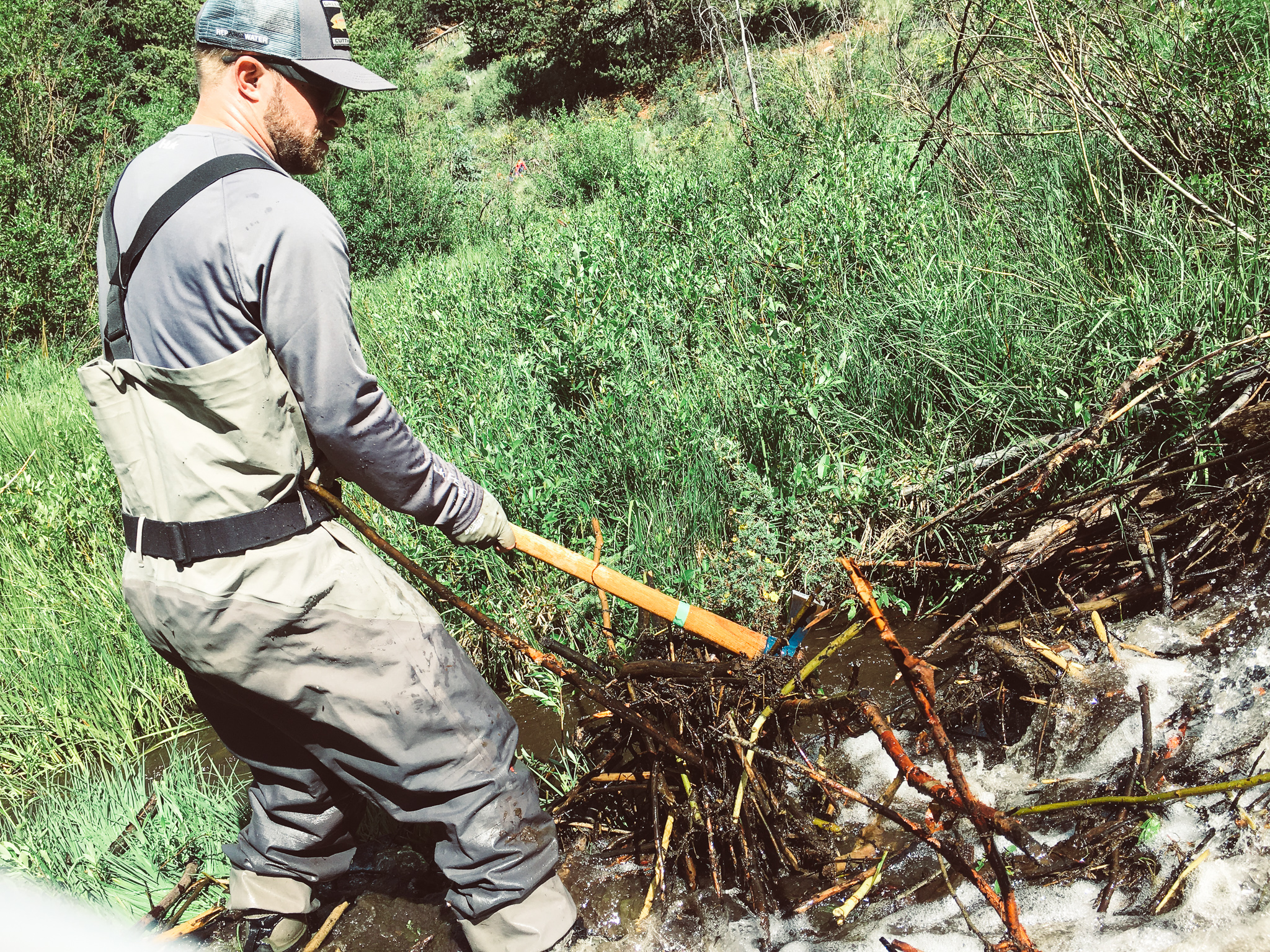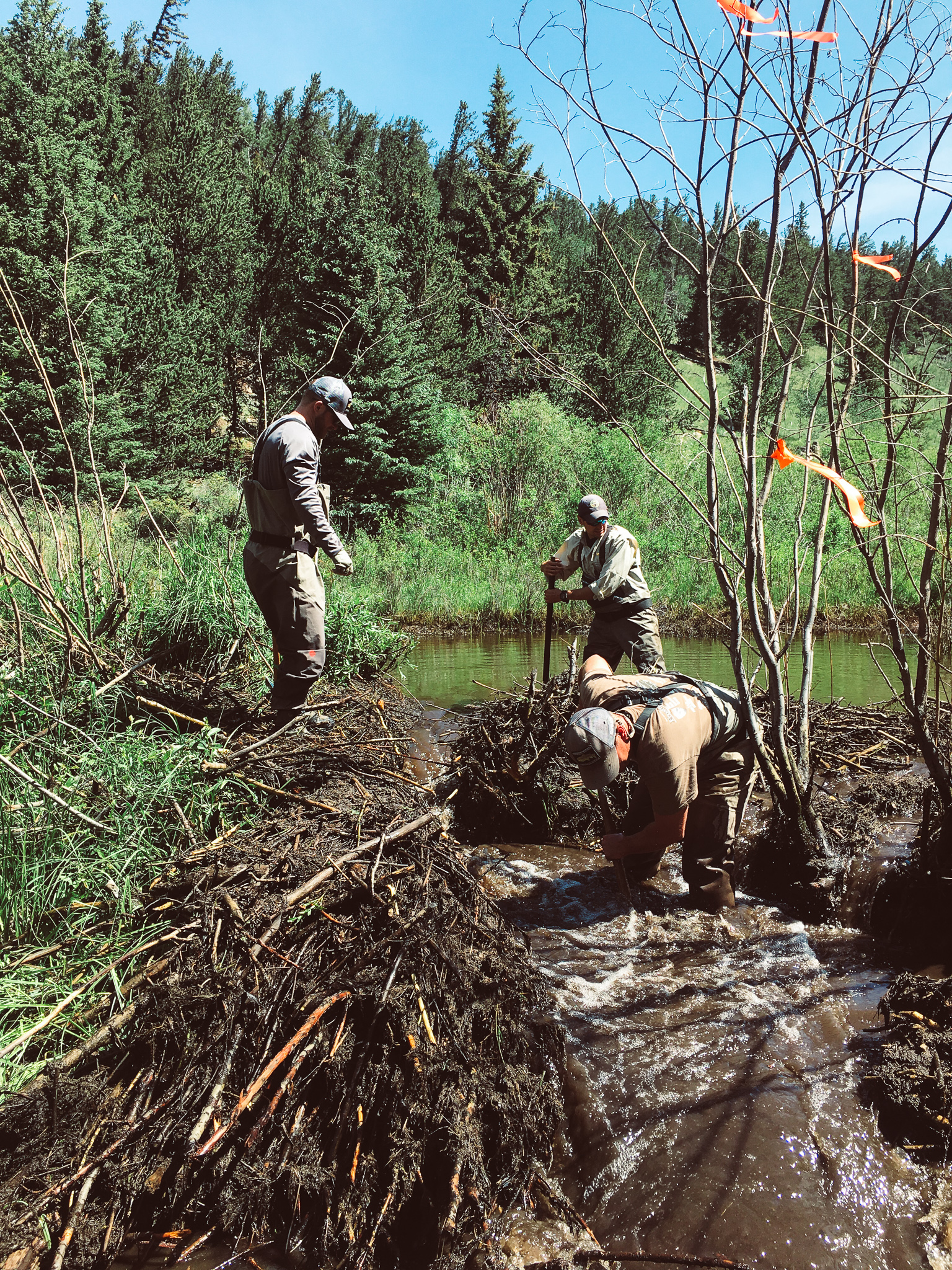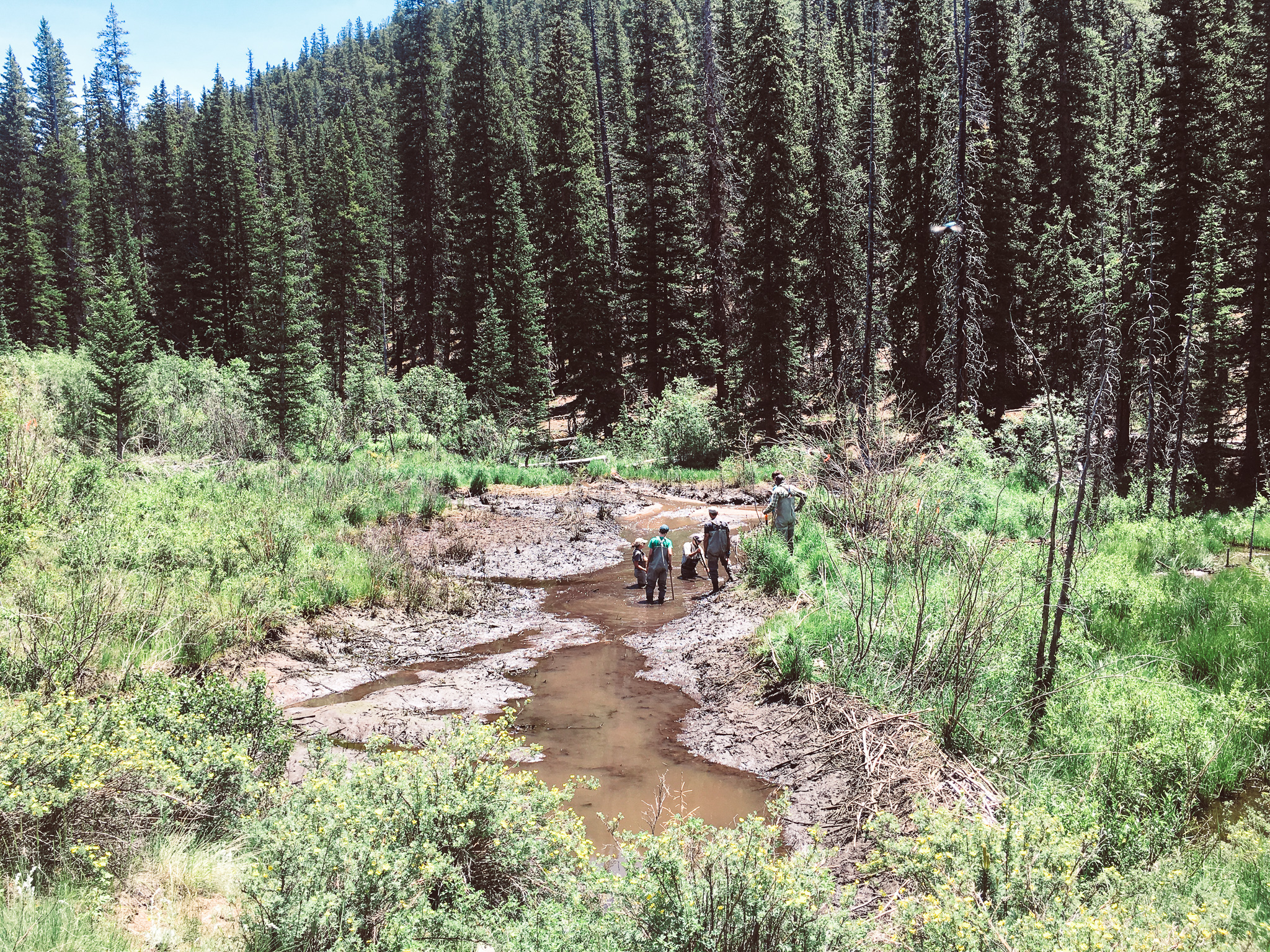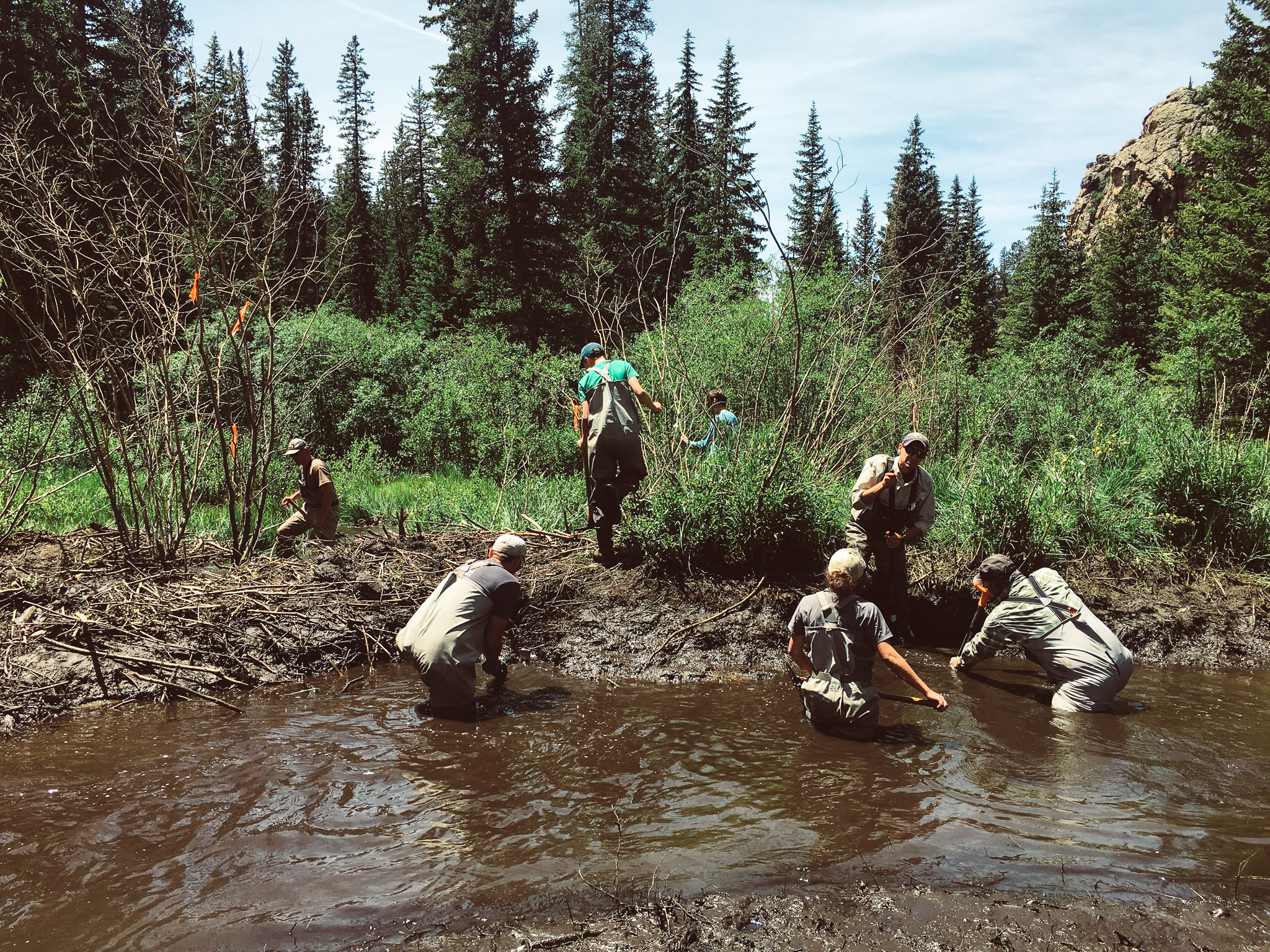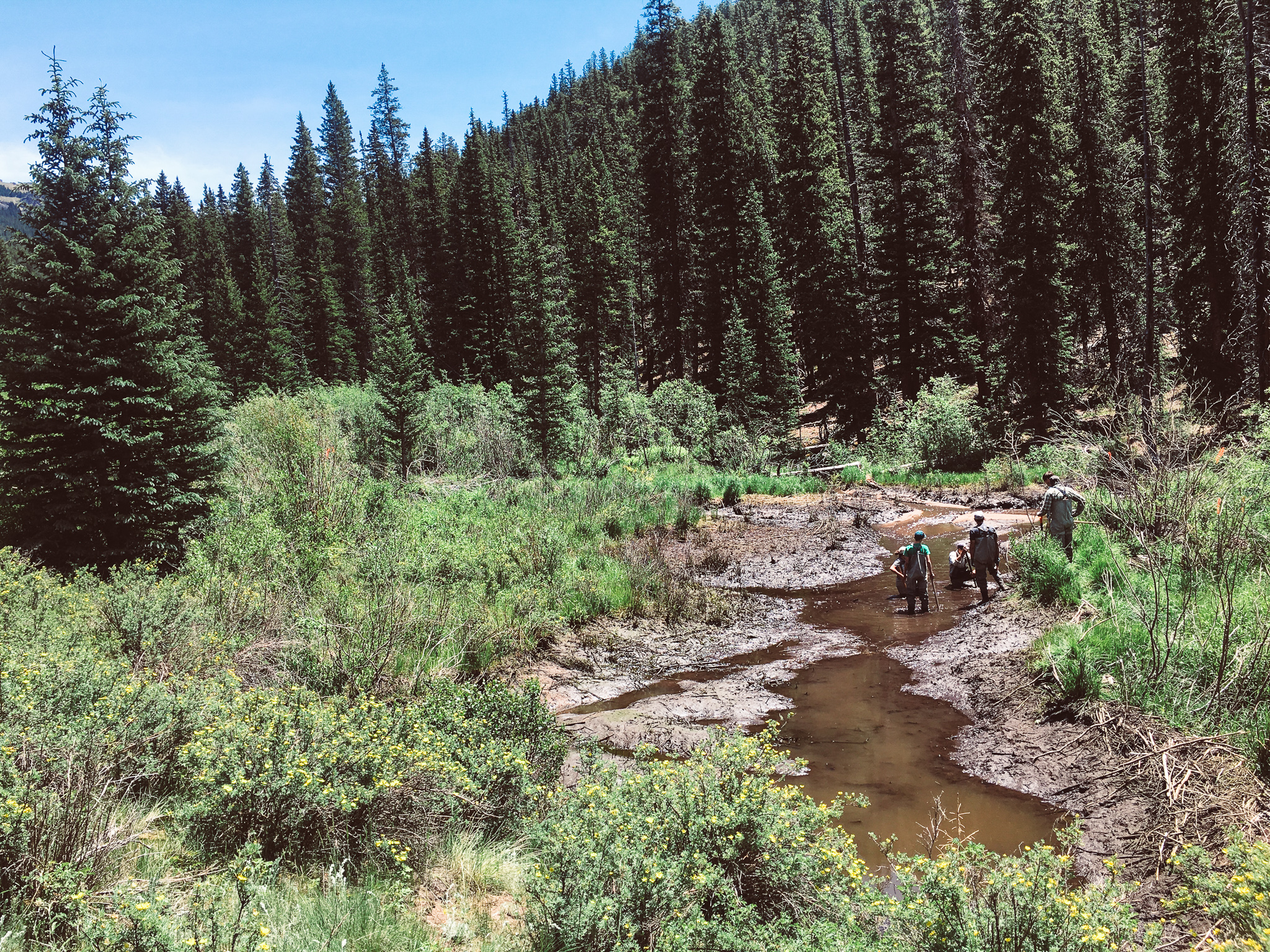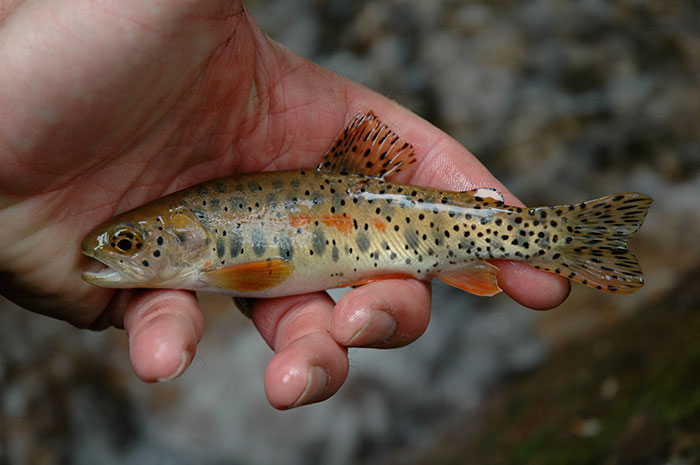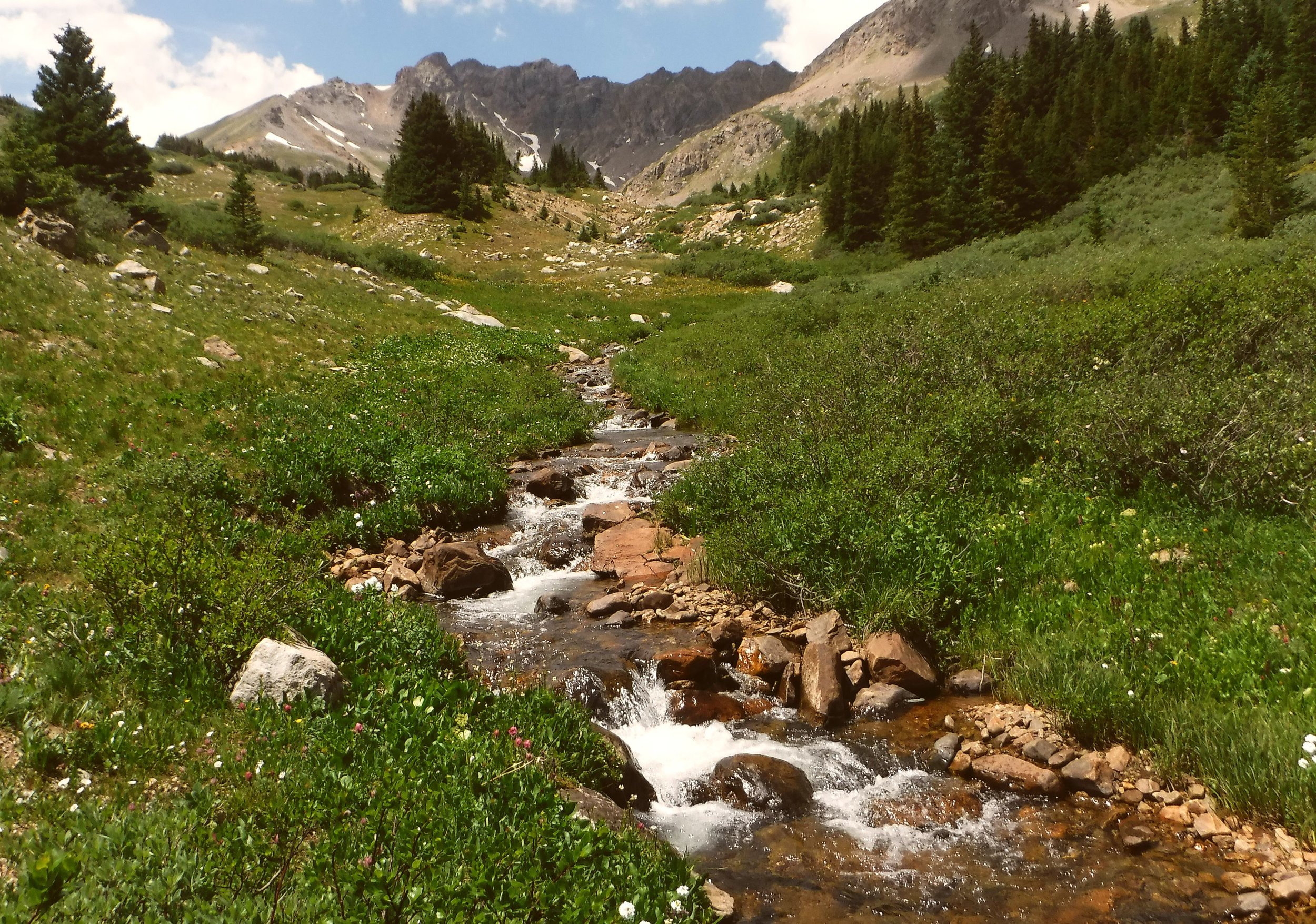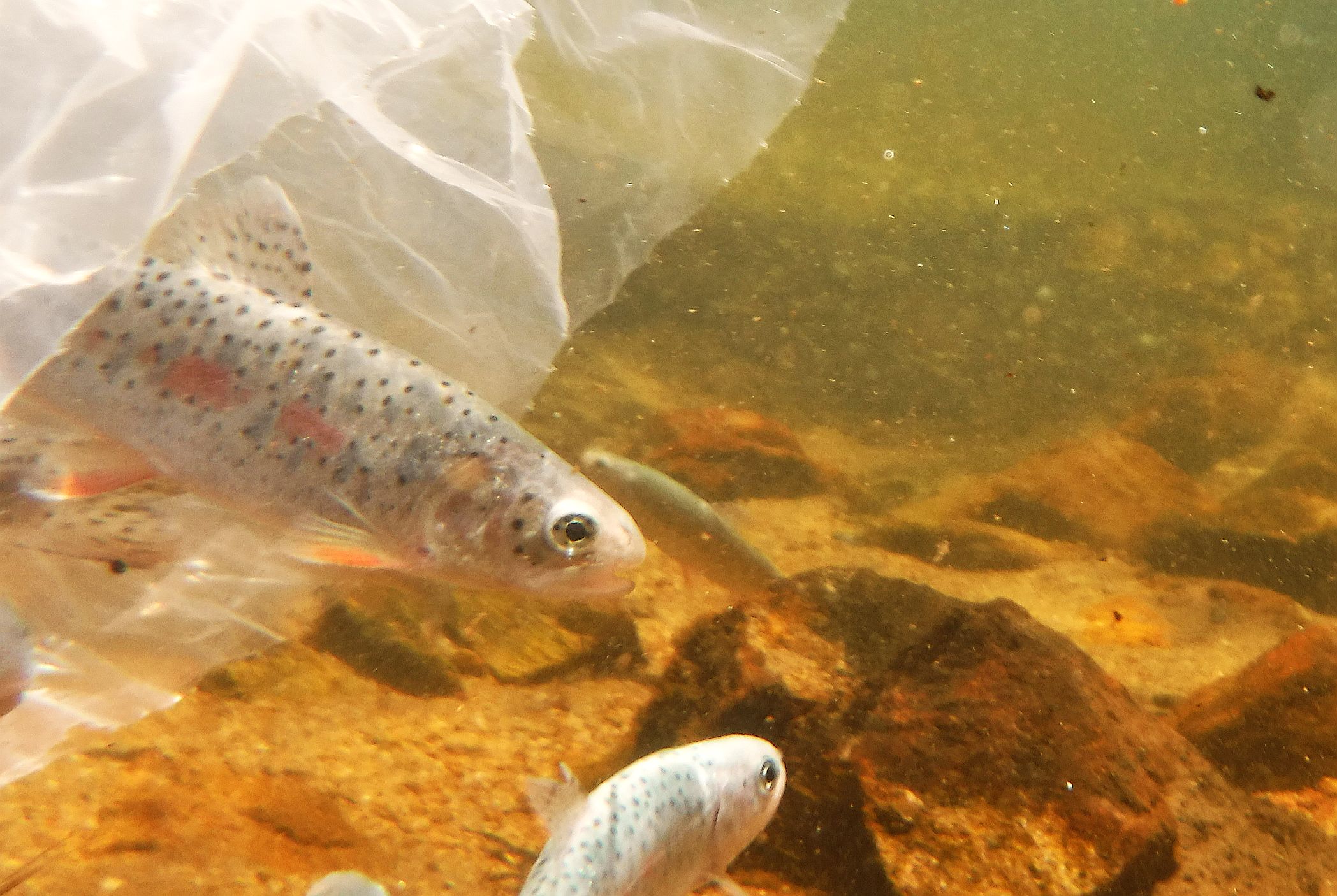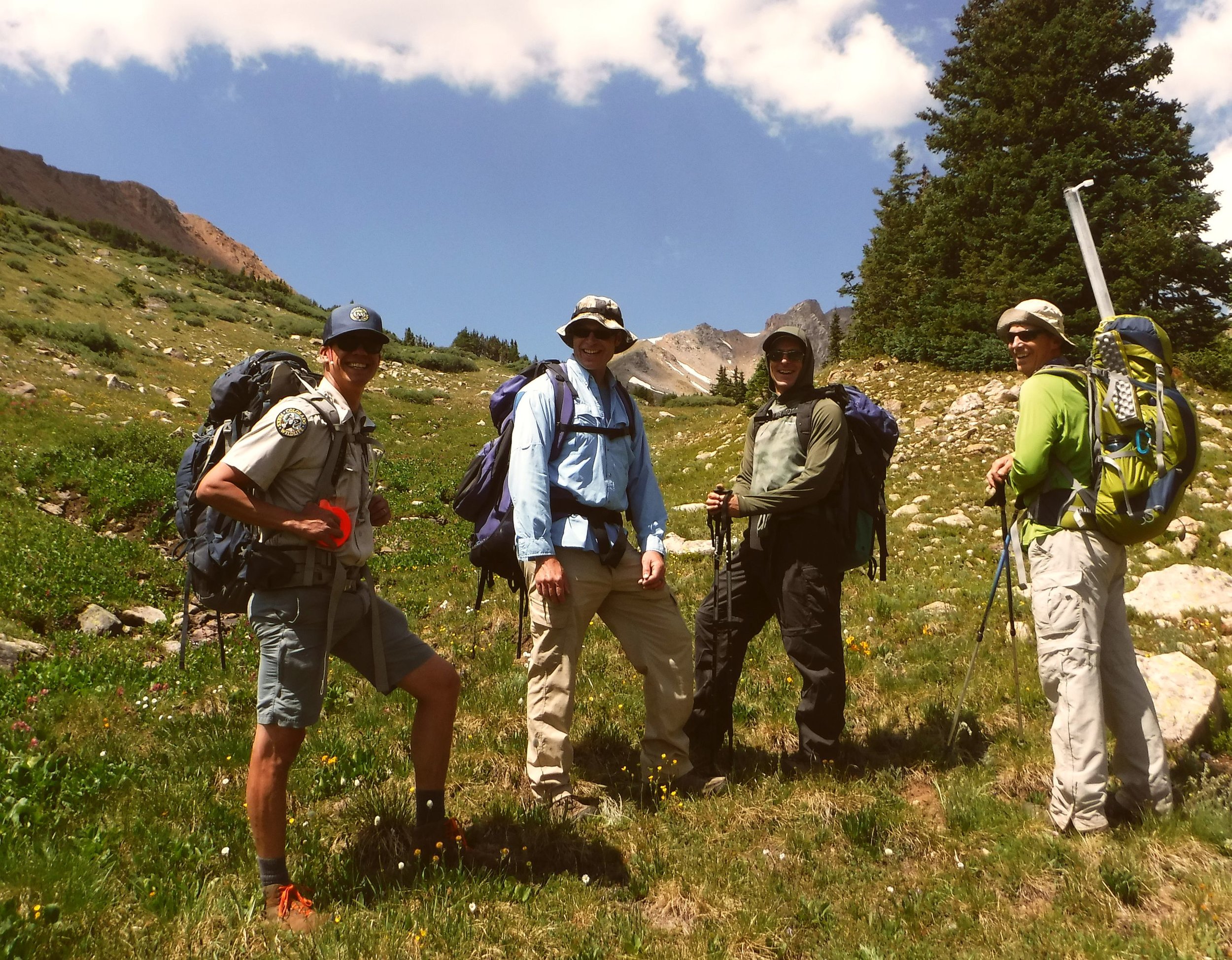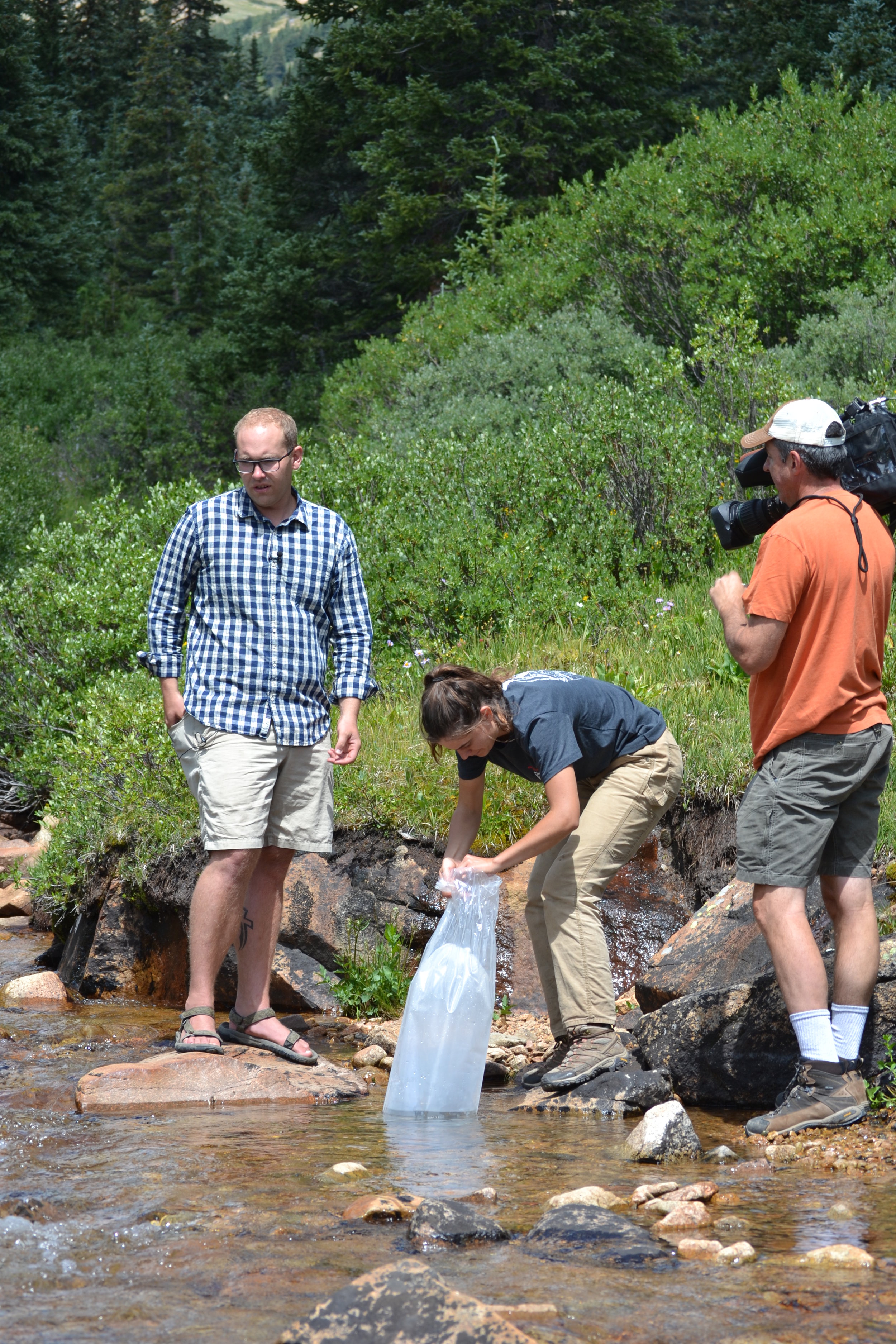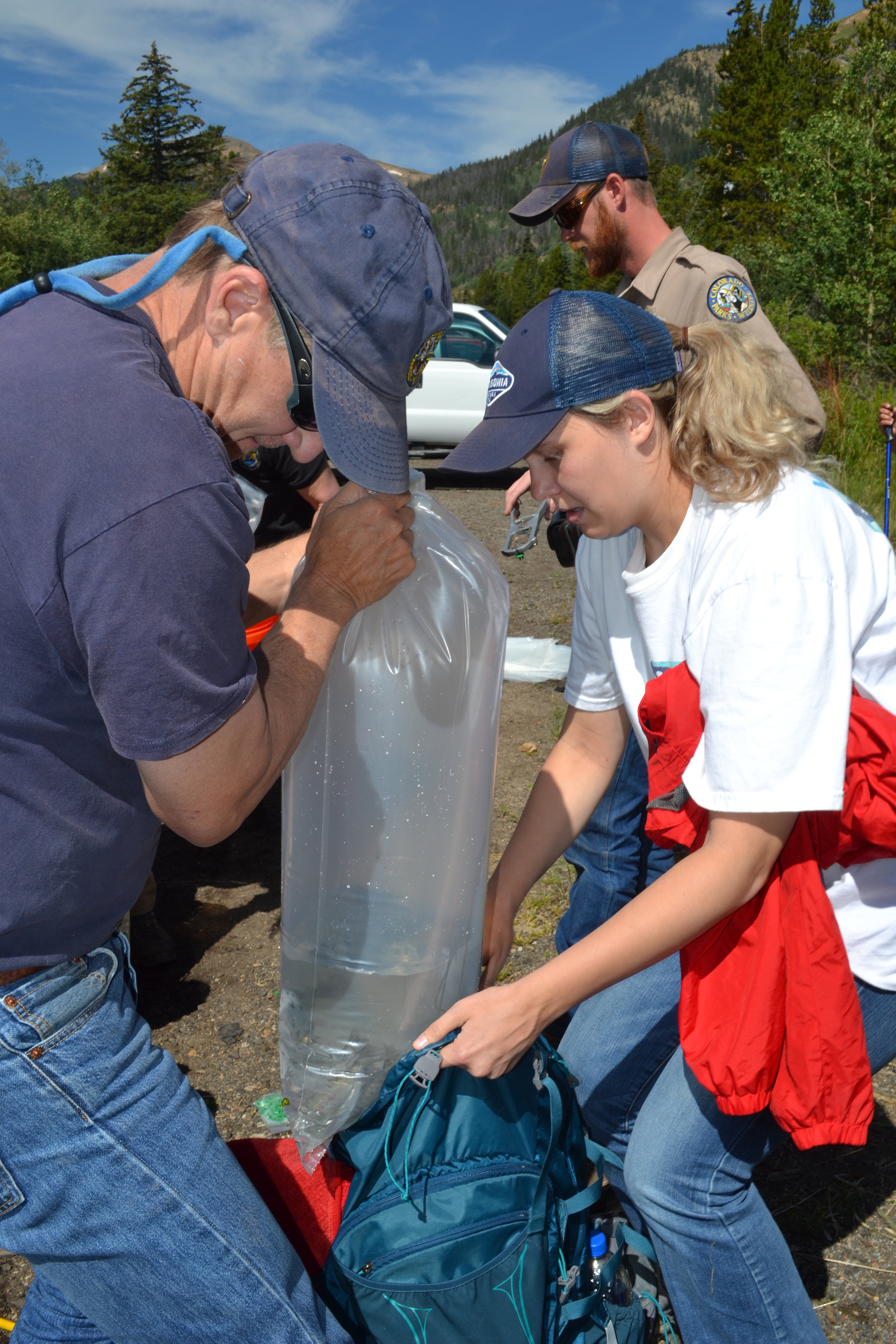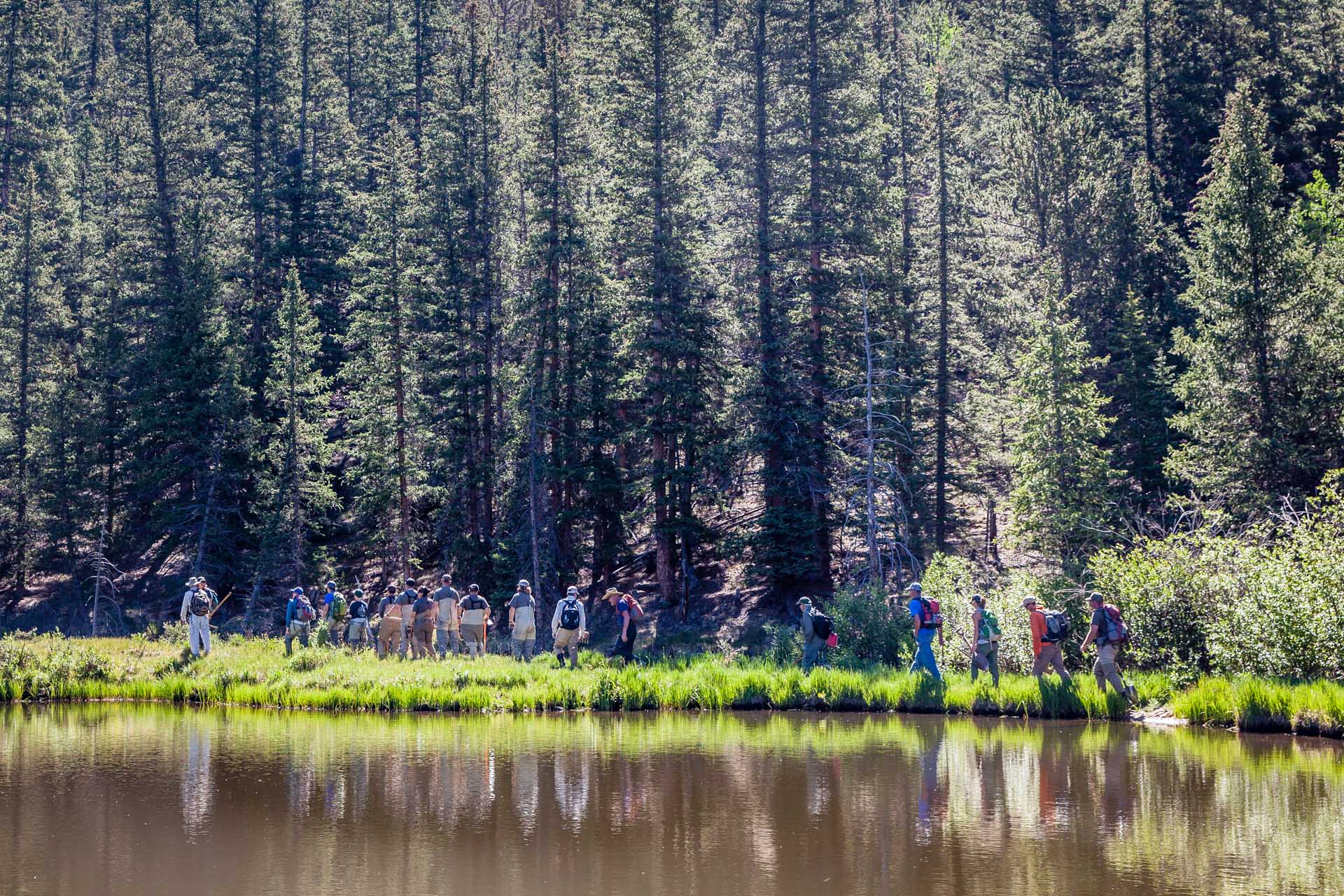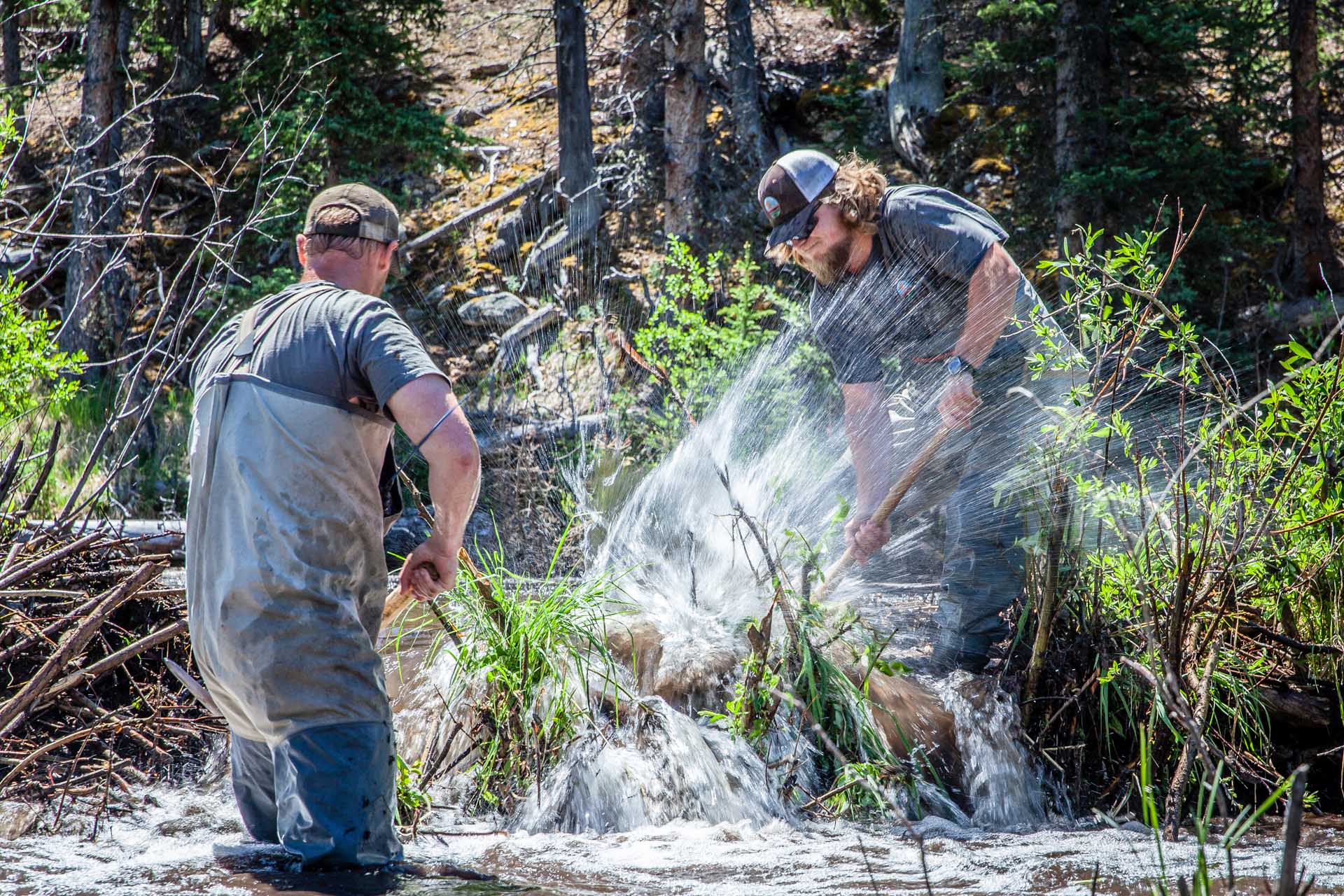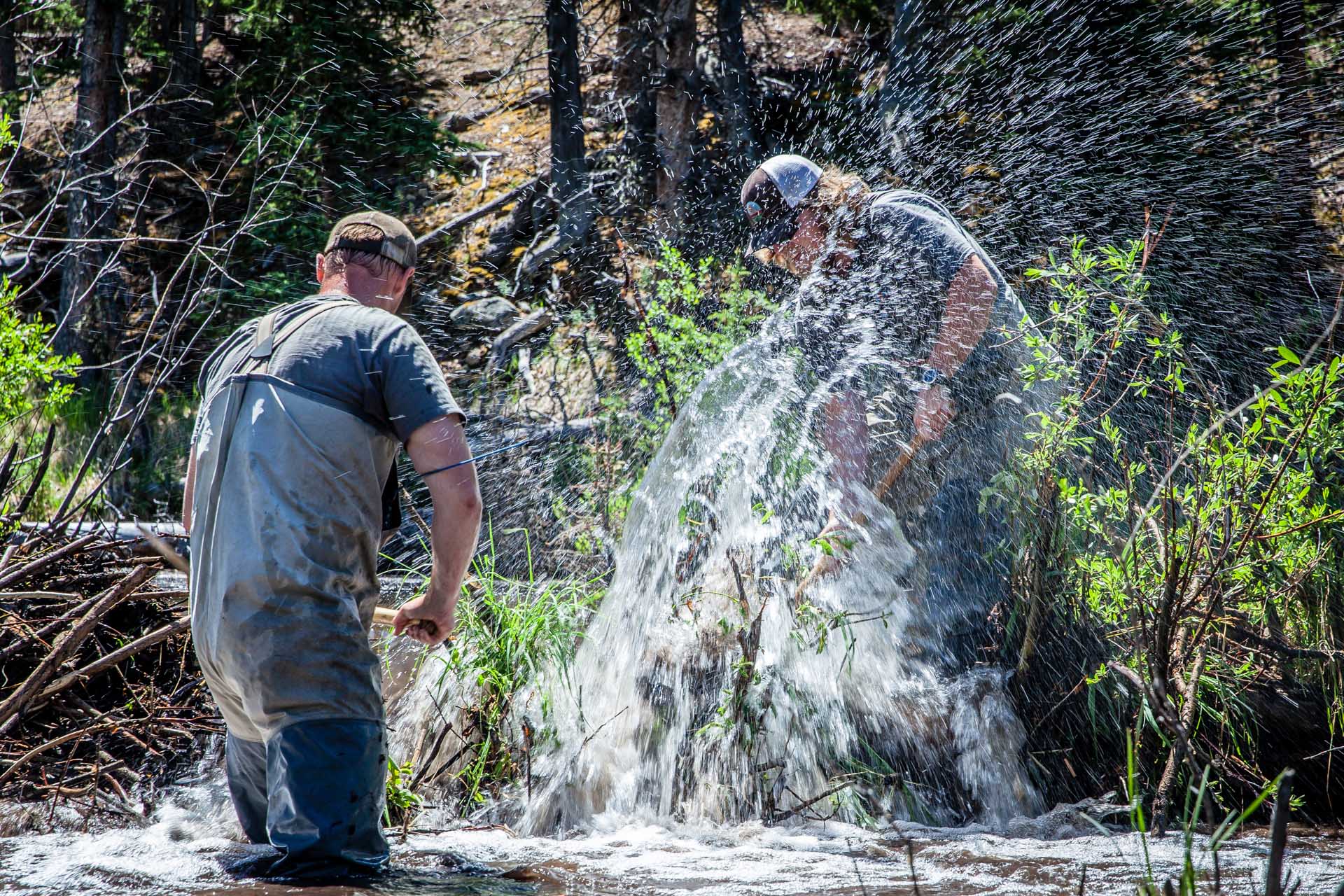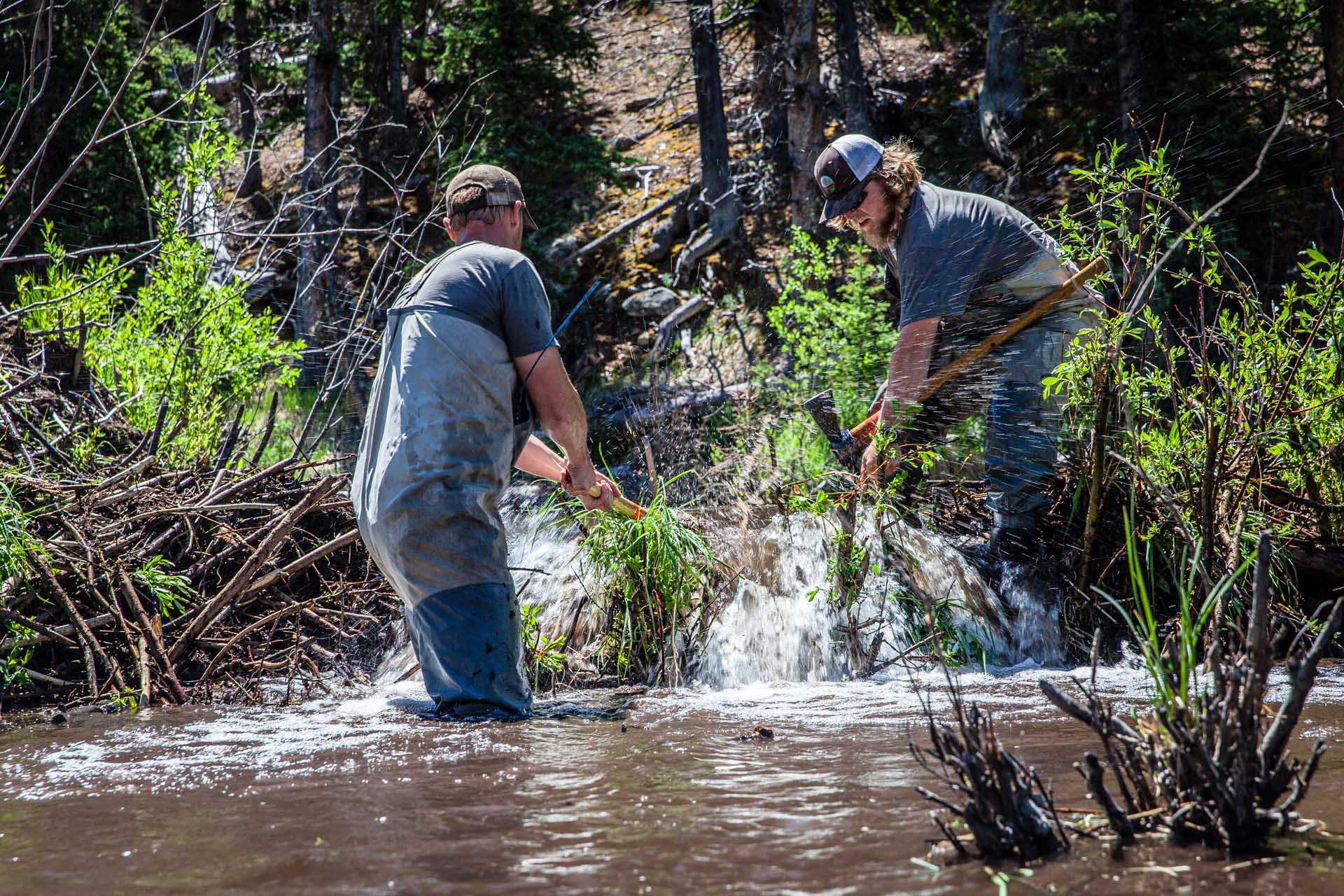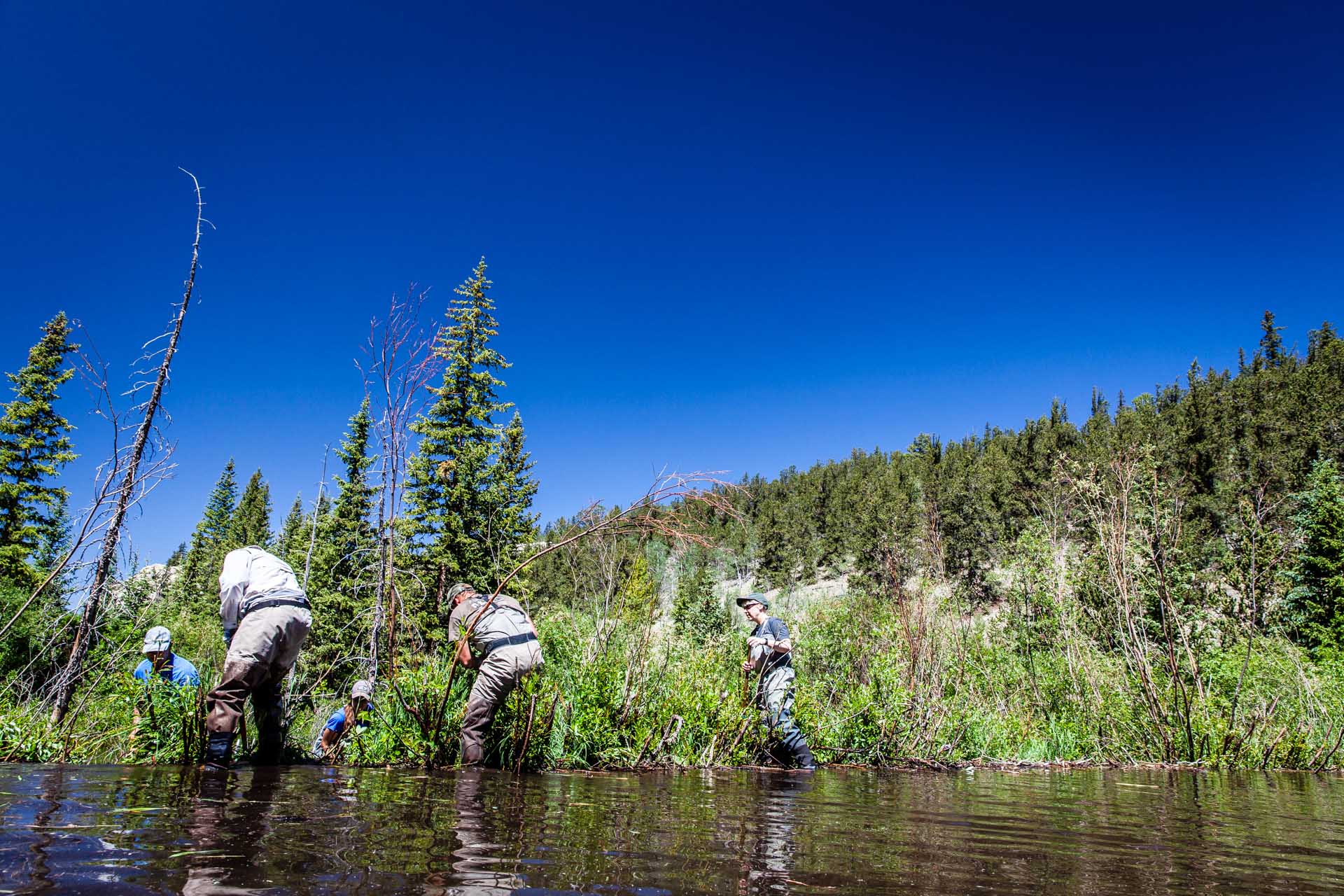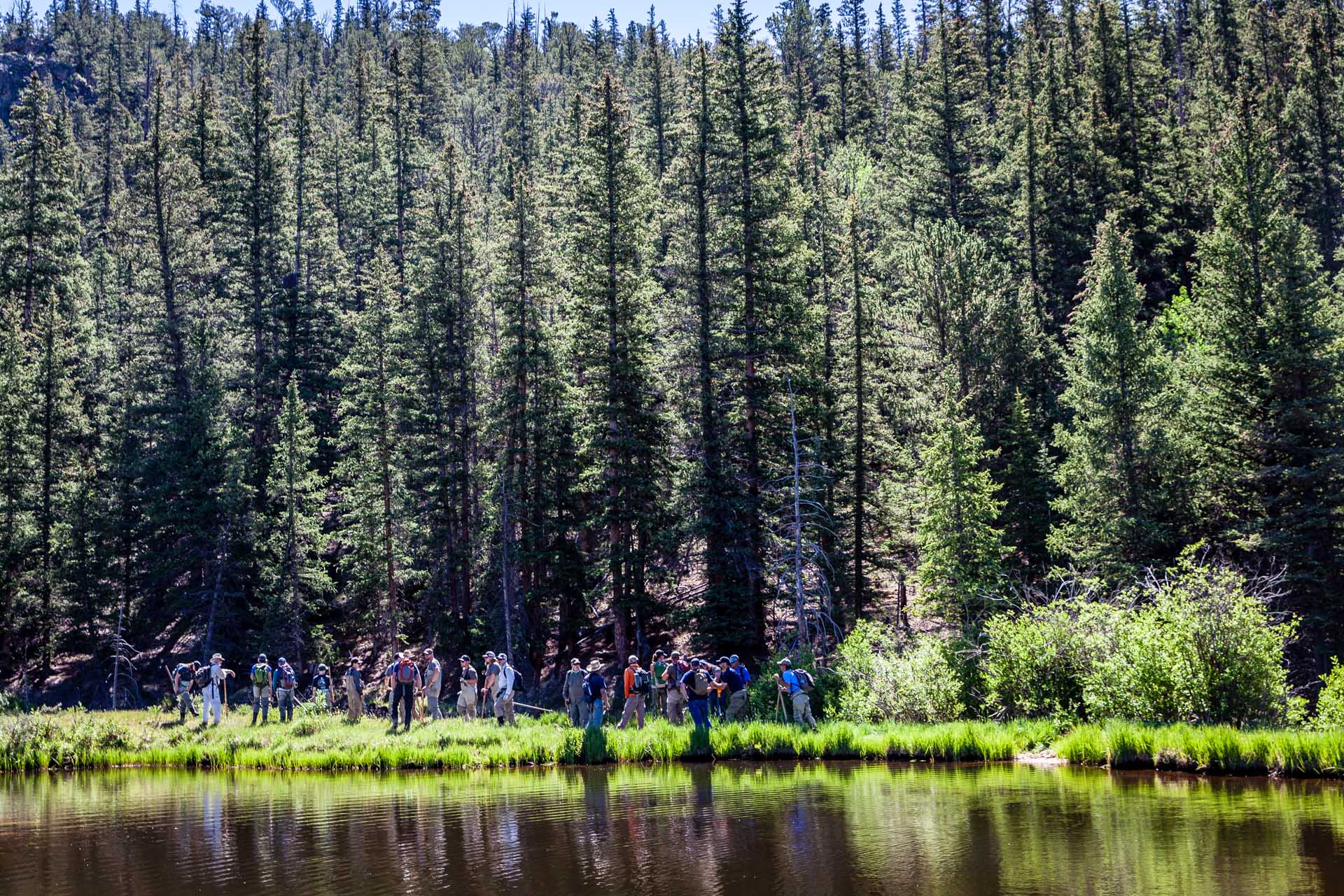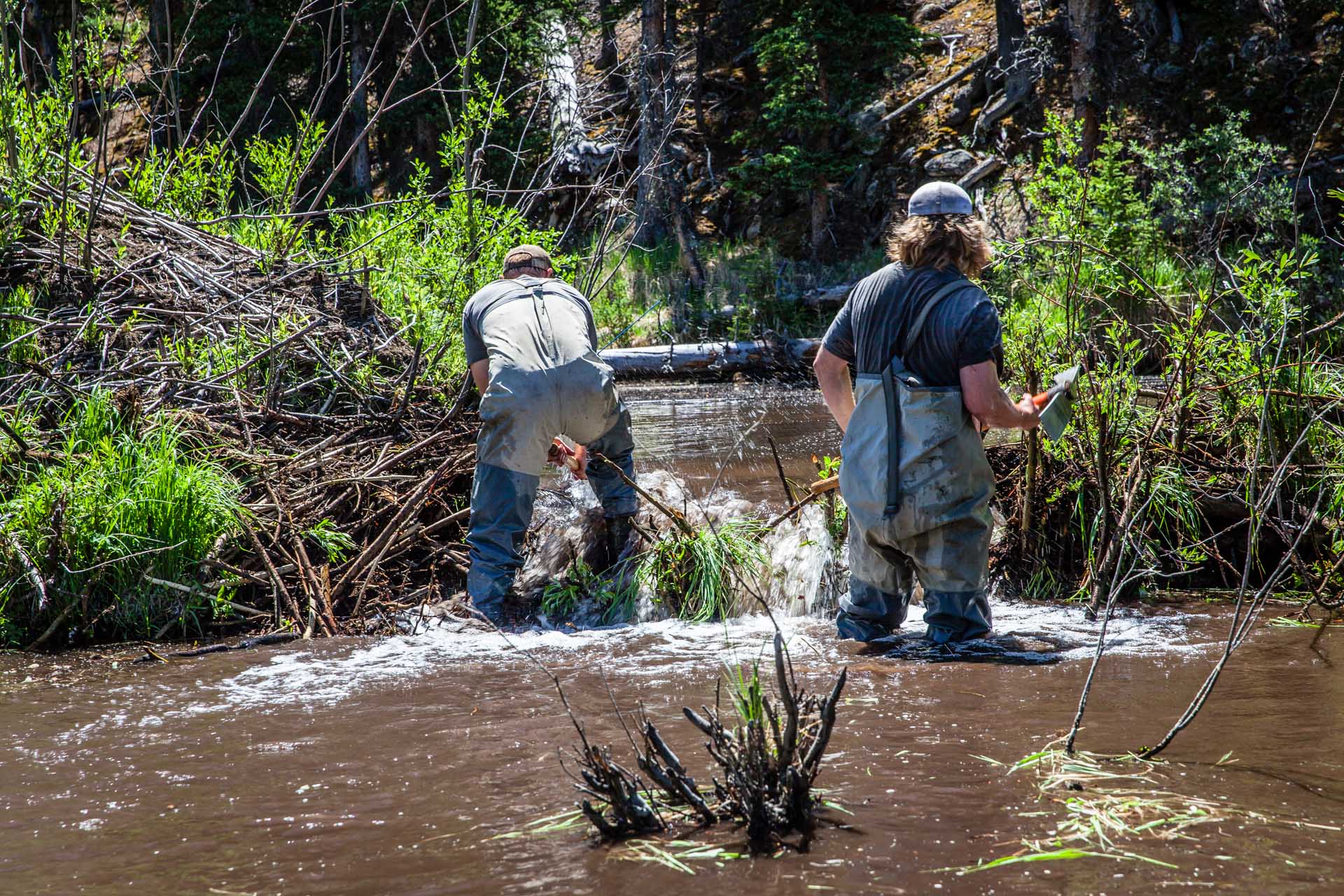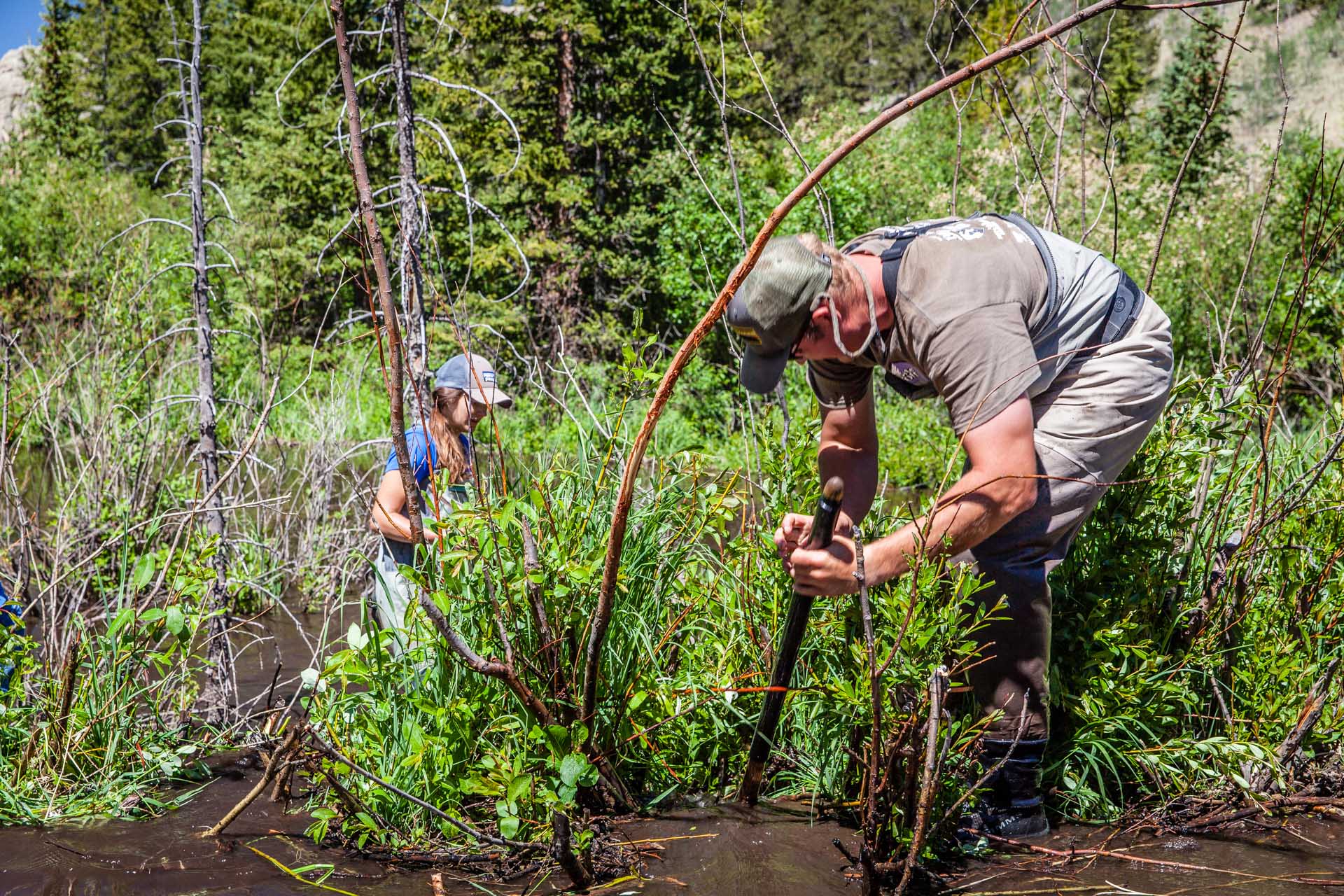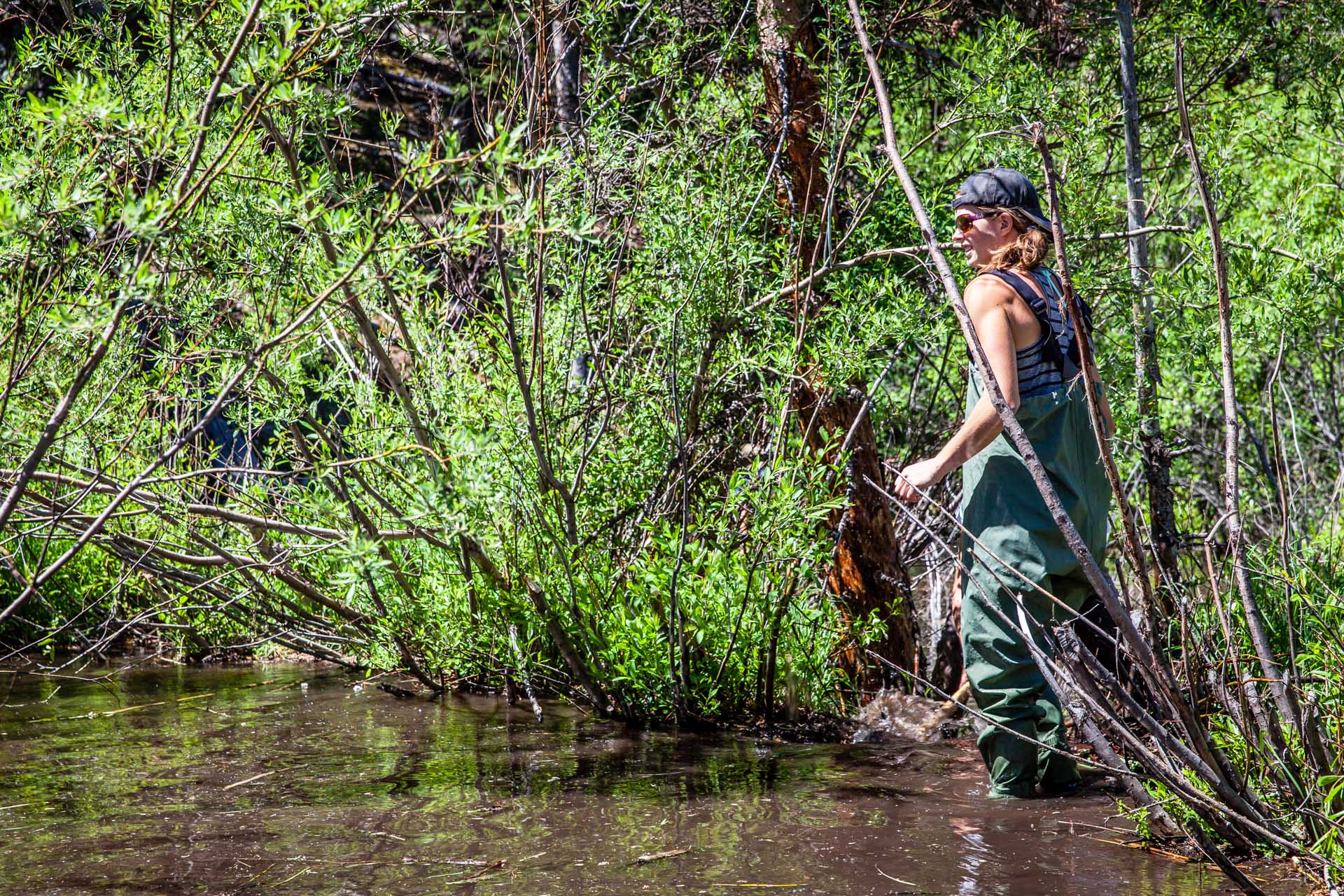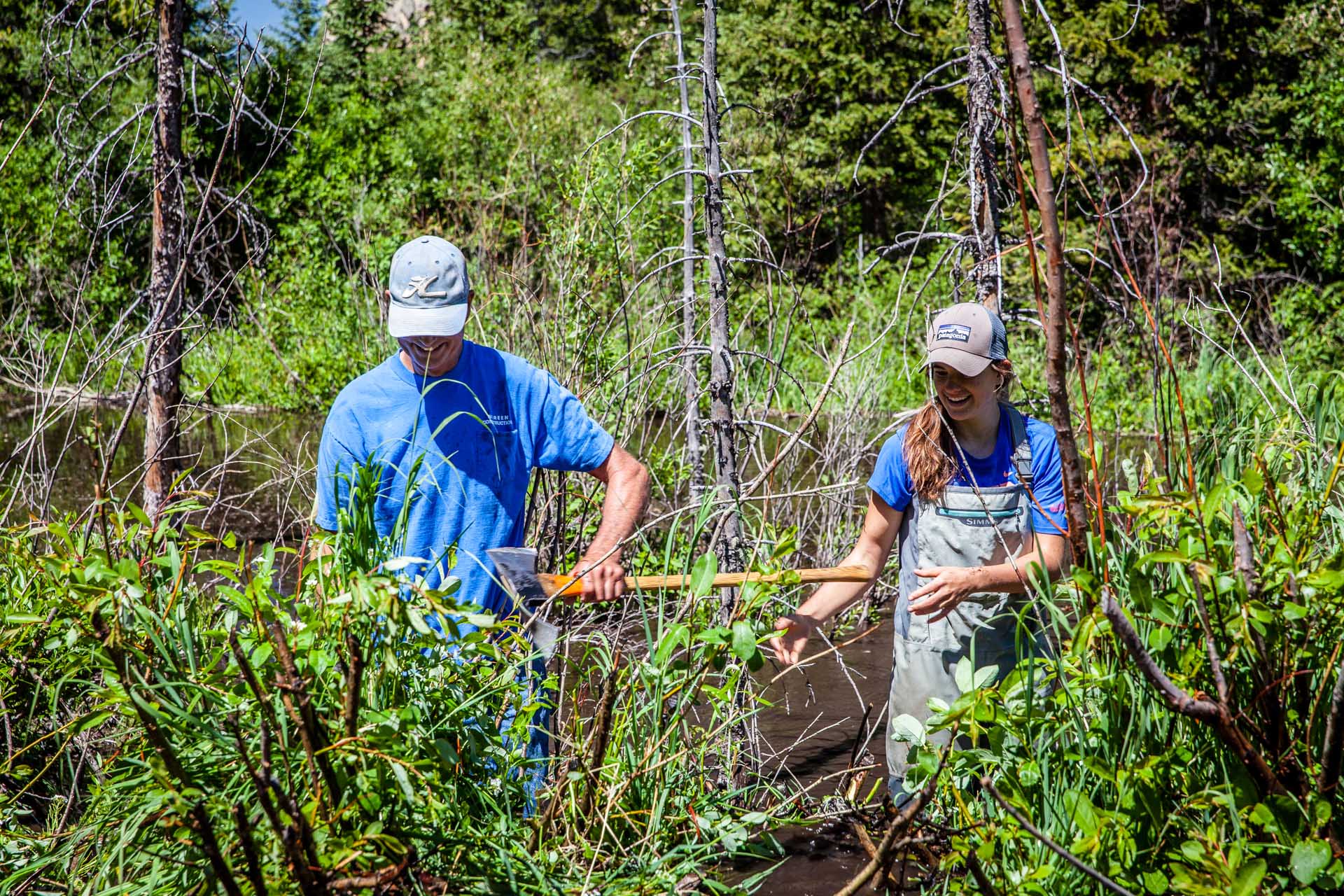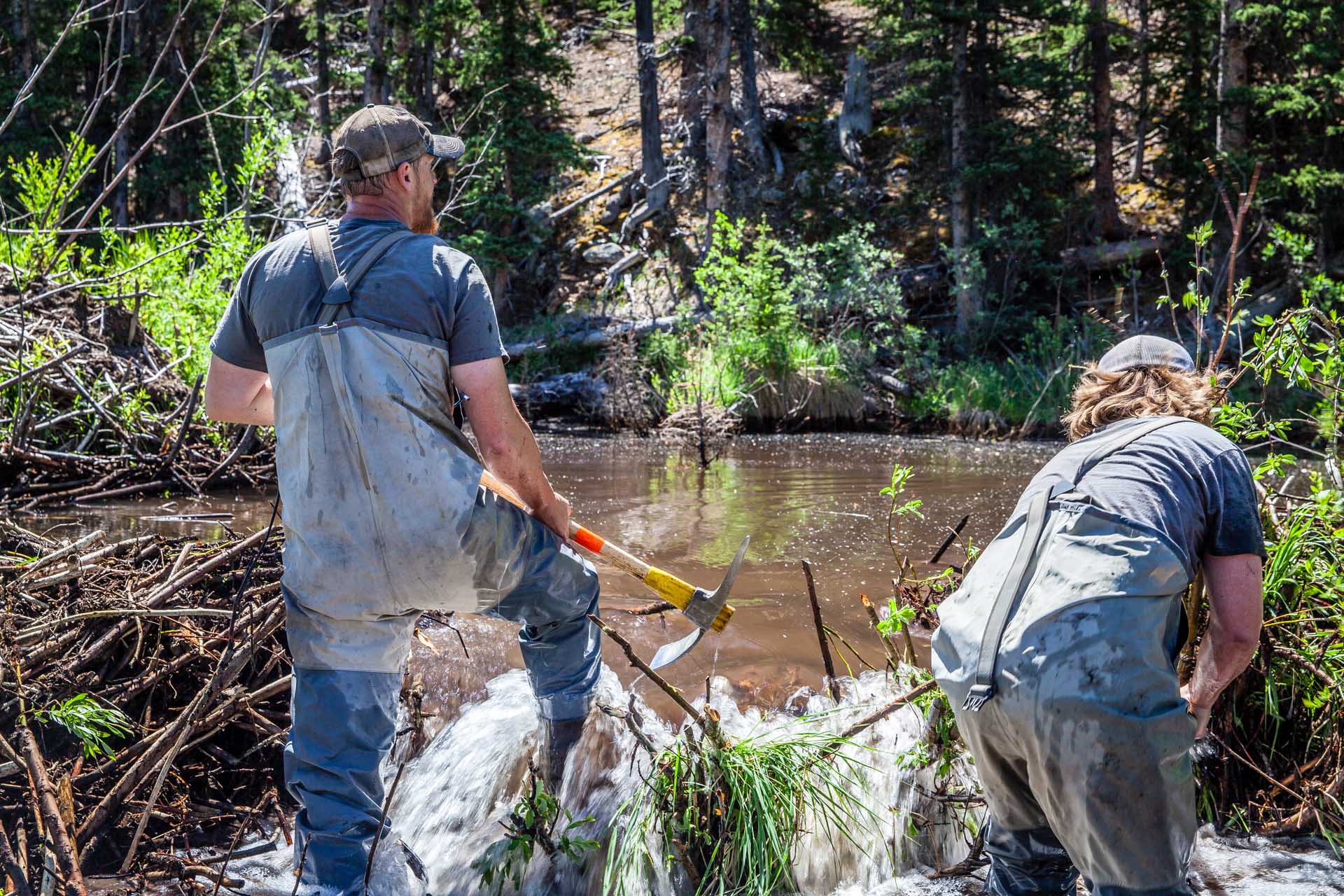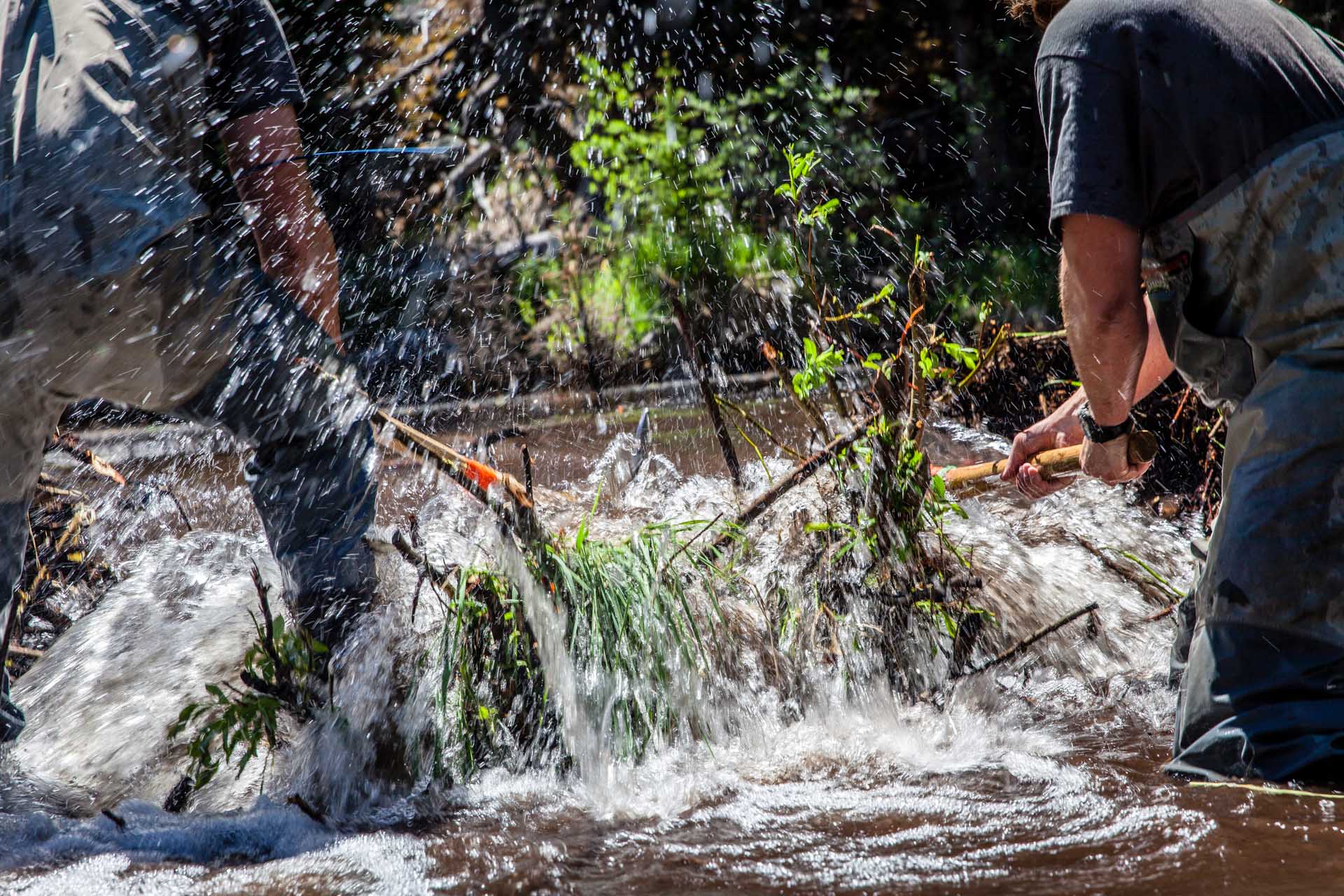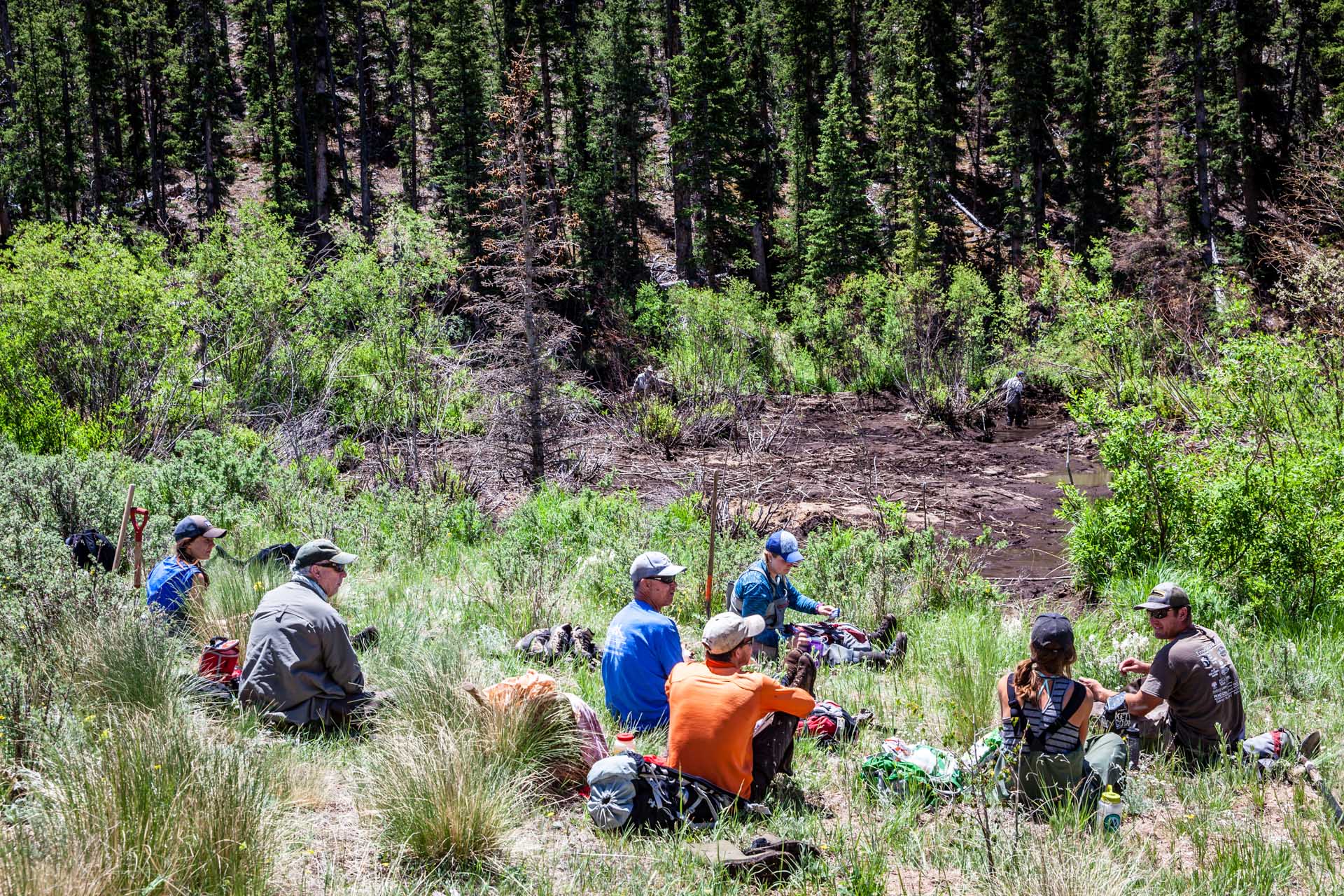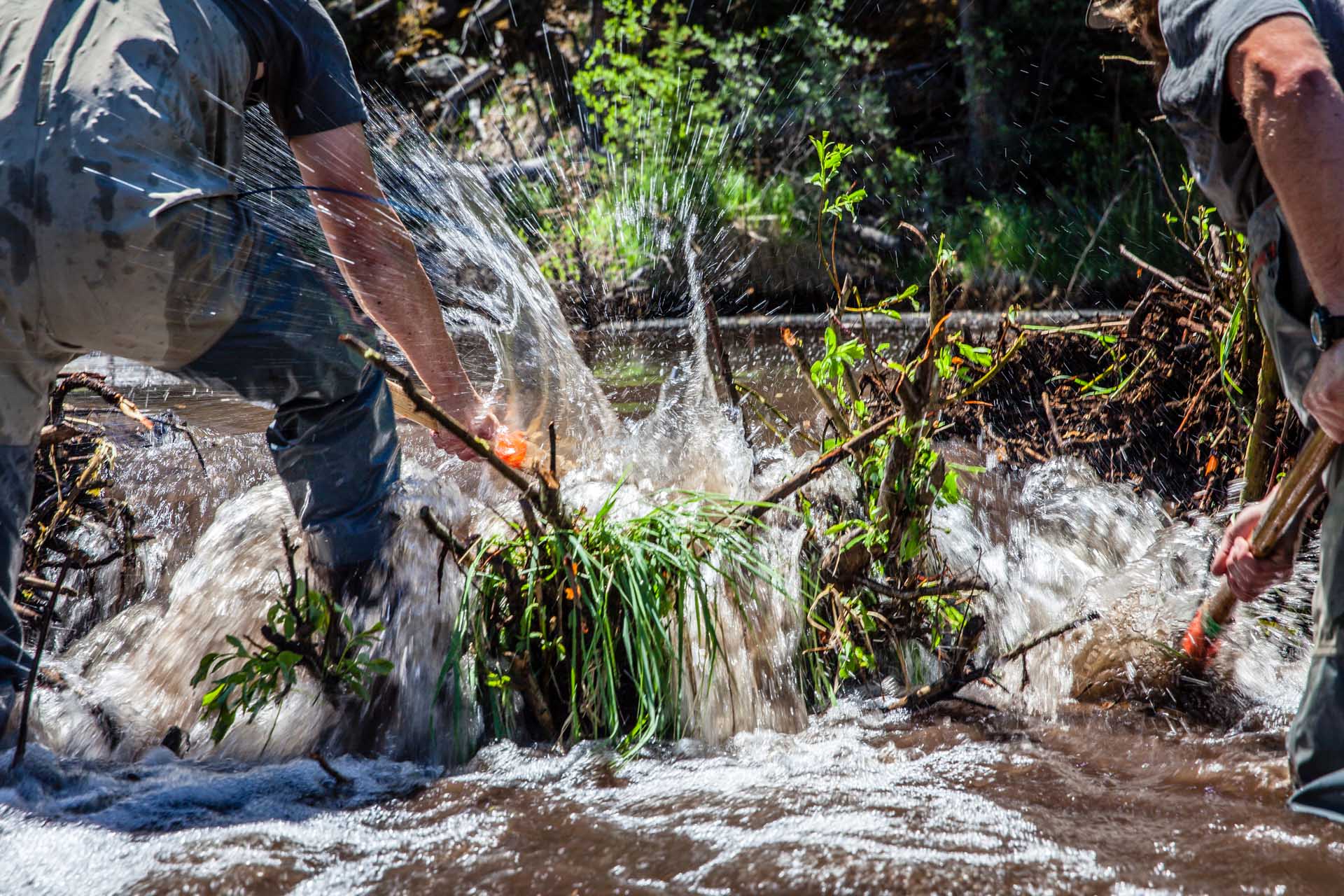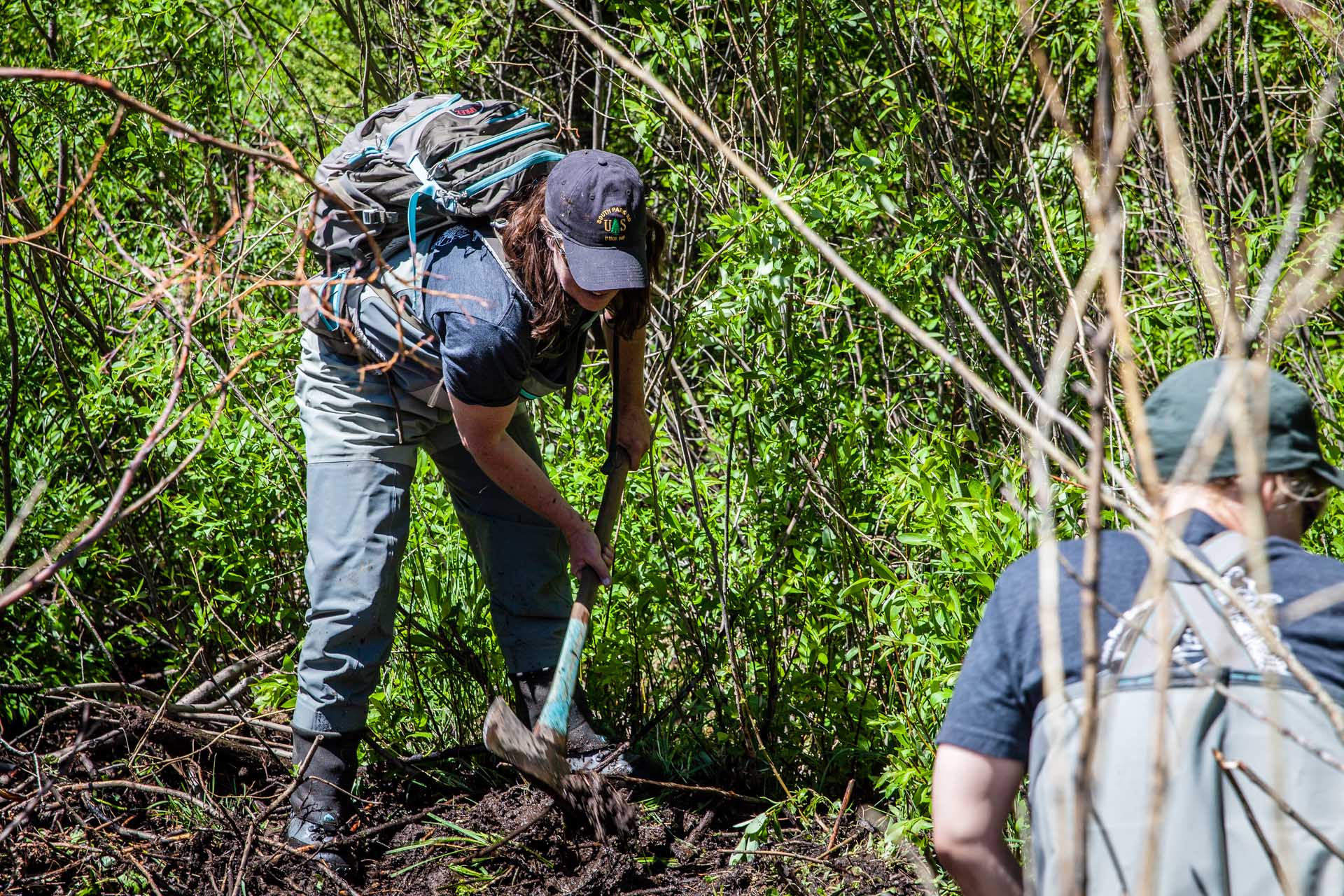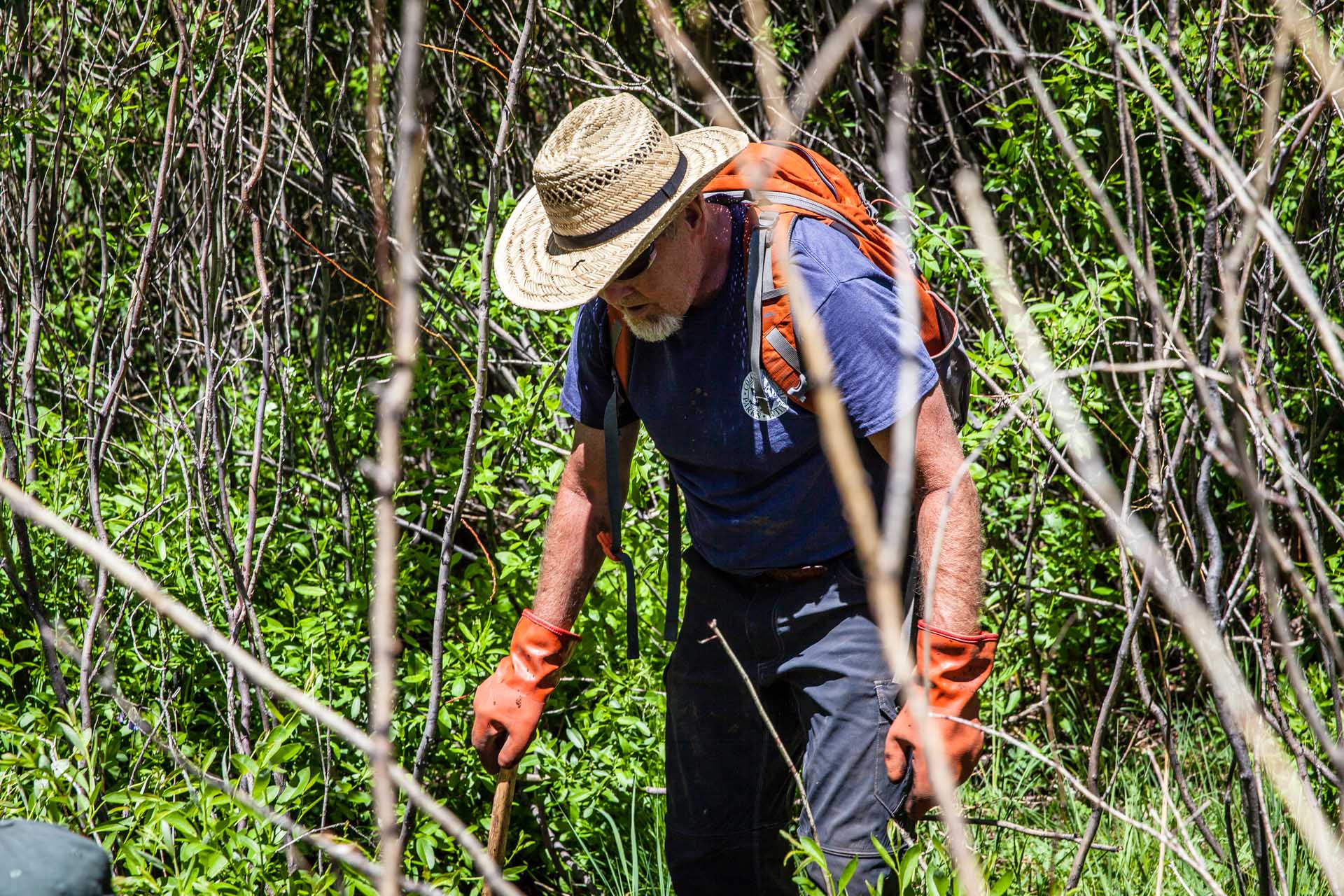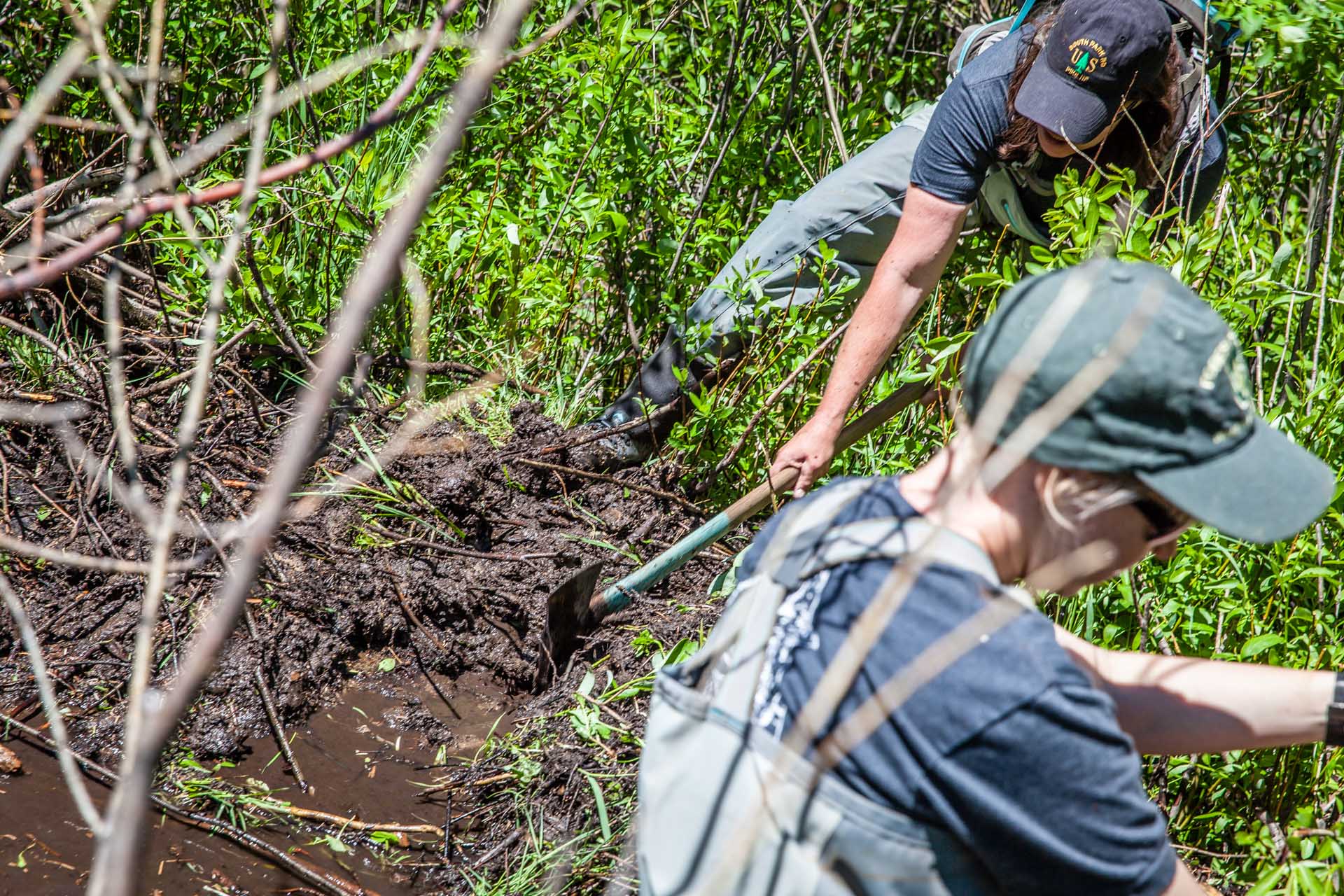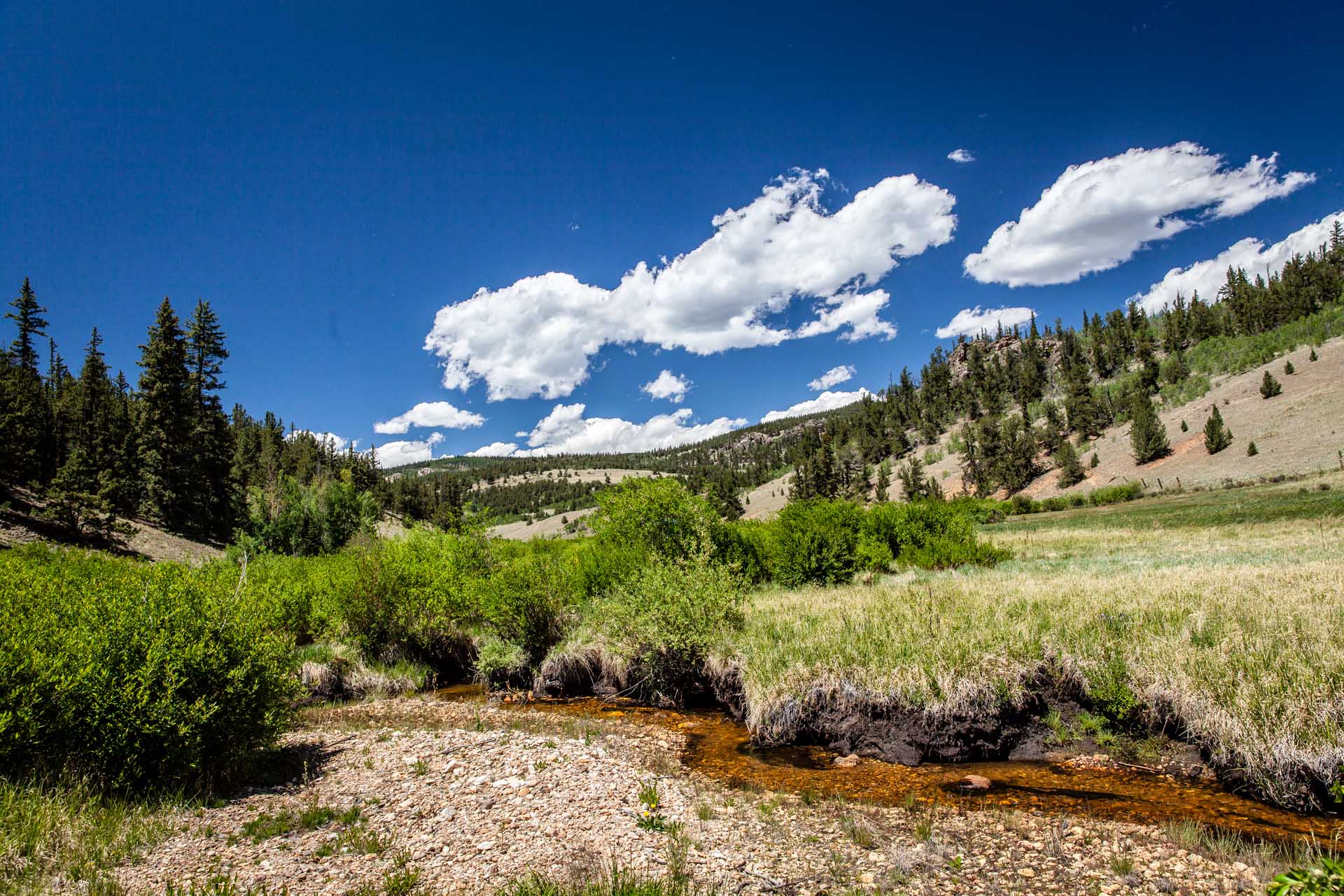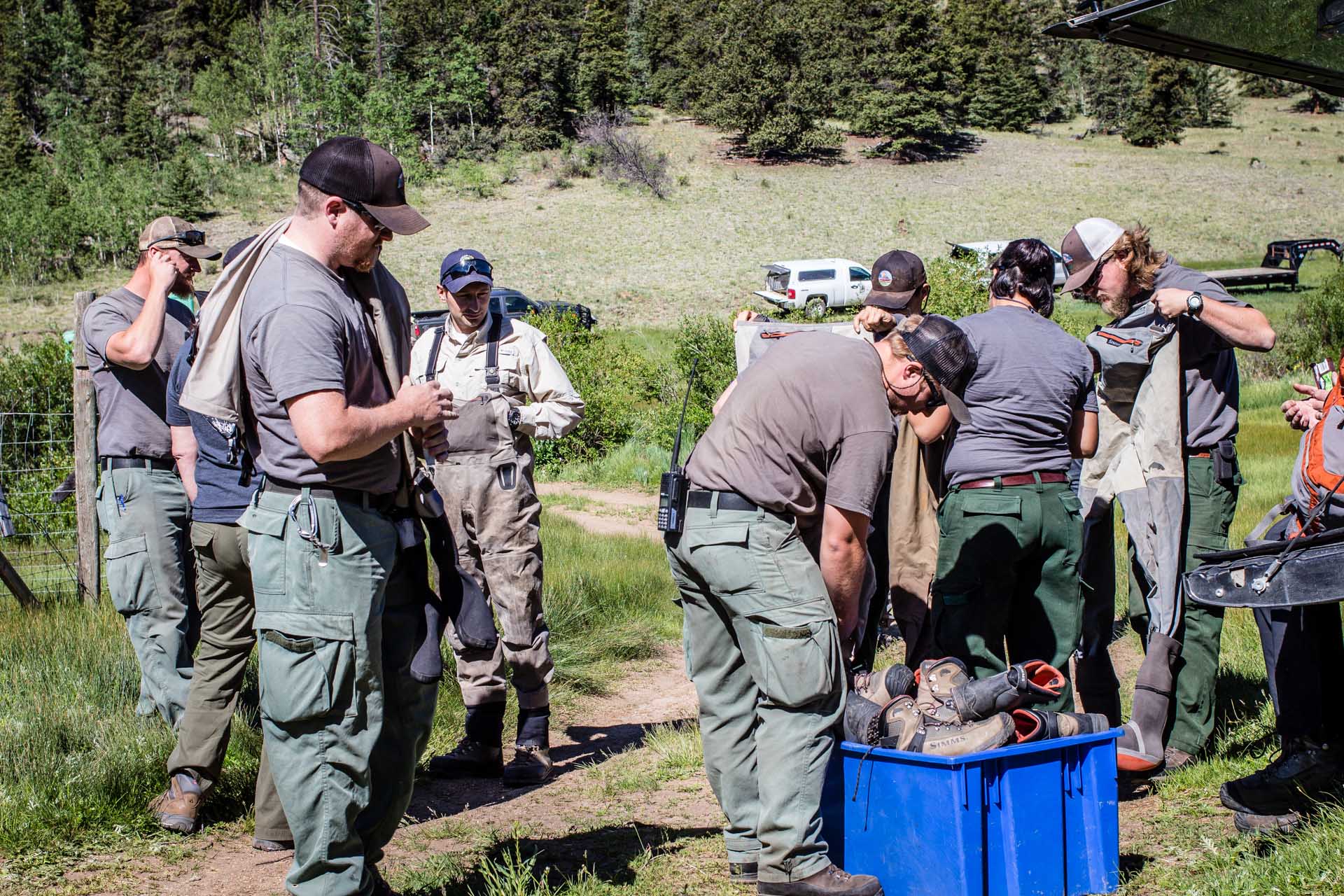Earlier this week, Colorado TU staff and Rocky Mountain Flycasters Chapter volunteers joined Forest Service representatives and our partners from Colorado Parks and Wildlife and Ross Reels on a site visit to see past and ongoing work as part of the Poudre Headwaters Project, the largest native trout restoration project in Colorado history. The group first visited the largely completed fish barrier on the Grand Ditch at La Poudre Pass, helping isolate the planned recovery waters for Greenback cutthroat trout on the east slope from the west slope drainages intersected by the Grand Ditch. From there, we stopped briefly at a road crossing with an undersized and not fish-friendly culvert along Neota Creek, which we hope to collaborate with the Forest Service to replace with an improved fish passage structure in 2024 or 2025.
The group next visited the active construction site where work is underway on installing a unique combination fish passage/temporary fish barrier project on Corral Creek. The barrier will help temporarily isolate habitat in Corral Creek for restoration of native trout and then later removed to restore connectivity with adjacent waters once they recovered for Greenbacks. An undersized culvert is being installed with a much larger culvert for the road crossing – large enough to have a simulated stream bottom constructed within the culvert so that fish can move freely up and downstream through the culvert just as if they were moving through the natural stream channel. At the mouth of the culvert, a steel wall barrier will be placed that can then isolate the upstream habitat temporarily but be readily removed in the future when habitats are reconnected as part of the planned Greenback “metapopulation” spread across multiple Cache la Poudre river tributaries.
Finally, we hiked to the expected downstream permanent barrier that will be the lowest point in the restoration area – a waterfall nicknamed “Starter Fluid” by expert kayakers who float the river. Located just below the confluence of the mainstem Poudre and La Poudre Pass Creek and about 11 miles up from where the “Big South” portion of the Poudre reaches Highway 14 and begins down to the more easily accessed Poudre Canyon runs, this cascade already blocks fish under most flow conditions and with some modest adjustments could be modified into a fully-effective fish barrier. Work on design concepts for further analysis and refinement is underway.
Work on the Poudre Headwaters Project has been a product of collaboration among TU, the Forest Service, National Park Service, and Colorado Parks and Wildlife, and has also benefited through support from:
The Water Supply and Storage Company, which provided funds in a Trust as mitigation for their Long Draw Reservoir permits
Ross Reels through their Native Reel program with proceeds from the Greenback reel
The Colorado Water Conservation Board, through Colorado Water Plan grant support
Bass Pro Shops Outdoor Fund
U.S. Fish and Wildlife Service fish passage program
Colorado State University and the Colorado School of Mines, through applied research and design efforts in support of the project
The Western Native Trout Initiative






